Curated by Damien Roach
20th June – 18th July 2020
Alexander Tucker
Ami Clarke
Anil Bawa-Cavia
Anja Kaiser + Jonas Holfeld
Anna Barriball
Anne Hardy
Annika Kahrs
Armando Andrade Tudela
Black Quantum Futurism
Boyle Family
Bronze x Jai Paul
Burkhard Meltzer
Caterina Riva
Catherine Wood
Cav Empt
Cédric Fauq
Cerith Wyn Evans
Chris Marker
Chris Ware
Christopher Orr
Dan Holdsworth
Dan Snaith (Caribou)
David Blandy
David Raymond Conroy
David Wightman
ECOCORE
Eddie Peake
Eleni Ikoniadou
Eloise Calandre
Emily LaBarge
Erica Eyres
Fennesz
Francesca Gavin
Francesco Pedraglio
Gareth Bell-Jones
Geoff Henman
Gilbert & George
Gordon Cheung
Graham Crowley
Hannah Barton
Hans Ulrich Obrist
Haris Epaminonda
Hatis Noit
Hiraki Sawa
Hisham Akira Bharoocha
Hito Steyerl
Iain Forsyth & Jane Pollard
Isabel Mallet
Jamie Shovlin
Jeanine Woollard
Johnny de Philo
Jordan Wolfson
Juha van ’t Zelfde
Keiken
Larry Achiampong & David Blandy
Laura Mulvey & Peter Wollen
Lawrence Lek
Lawrence Weiner
Lee Gamble
Liam Gillick
Lisa Oppenheim
Lucinda Chua
Martin Holman
Mathew Weir
Matt Calderwood
Melissa Agate
Mica Levi
Michael Oswell
Muntean/Rosenblum
Nabil Ahmed
Nathan Witt
Neil Farber & Michael Dumontier
Nick Luscombe
Nigel Cooke
Nina Canell
Octavia E. Butler
Pamela M Lee
Ram Dass & Justin Boreta
Rosalind Nashashibi
Saskia Olde-Wolbers
Shezad Dawood
Simon Denny & Matt Goerzen
Simon Dybbroe-Møller
Simon Parris
Sougwen Chung
Stephen Willats
Sung Tieu
Tauba Auerbach
Tim Shaw
Tonje Thilesen
Wade Wallerstein
William Daniels
Yuri Pattison
Real Time is a hybrid, multi-platform project reflecting on time and the present – a deep breath, a slowing down, a taking stock.
Rejecting the anxiety-inducing FOMO of the current livestream drive, Real Time is a slowly unfolding project engaged with a mode of deceleration, instead of ramping up the feeling of ‘constant now’ we so desperately need to leave behind. Consisting of contributions from artists, designers, writers and musicians, this exhibition takes place across various spaces, from gallery website, to radio, social media, playlists, PDF publication and email. Taken as nodes in an organic, reactive network, the constituent parts will collide, overlap, bounce off of each other and the outside world to create refracting frictions and possibly, hopefully, portals for a slow, contemplative meditation.
At its core, Real Time offers an optimistic, progressive vision of art and its reception. The project advocates a change of pace, reversing the trend of an increasingly accelerated response to the now, exploring alternative models of being and comprehension, through the elusiveness of the present.
—
Damien Roach is a London-based artist, researcher and lecturer. His projects span art, design & creative direction, publishing, sound/music and audiovisual, and he is currently Associate Lecturer for LCC’s Visual Media MA programme. Recent projects include immersive AV performances at London’s ICA and Tate Modern, design for clients ranging from Wysing Arts Centre to Disney, and publishing a journal exploring non-dystopic future visions with a host of contributors including Susan Hiller, Dr Isabella Maidment, Hans Ulrich Obrist, and Liam Gillick. He has exhibited internationally, including at the 51st Venice Biennale, ‘Learn to Read’ at Tate Modern, ‘Housewarming’ at Swiss Institute NYC, and solo presentations at institutions including DRAF (London), Kunst Halle Sankt Gallen (Switzerland), Arnolfini (Bristol), and Neuer Aachener Kunstverein (Germany).
—
Please note that this exhibition takes place online across a variety of platforms. Works will be released slowly over the duration of the show.
Extract from Chris Marker, La Jetée, 1962
Single channel video with sound
28 minutes
LA JETEE © 1963 Argos Films
― Octavia E. Butler, Kindred

Saskia Olde Wolbers, Day-Glo, 1999
Single channel video projection, SD PAL DV, 4:3 Stereo
6 minutes looped
Voice over Valerio Martinez
Courtesy of Maureen Paley, London
Juha van ’t Zelfde, One Hour and Eighteen Seconds Of Real Time From 9th January 2004 For Damien Roach, 2020
Sound work
1 hour 18 seconds
Rosalind Nashashibi, The Prisoner, 2008
Single channel transfer from two channel 16mm film
5 minutes
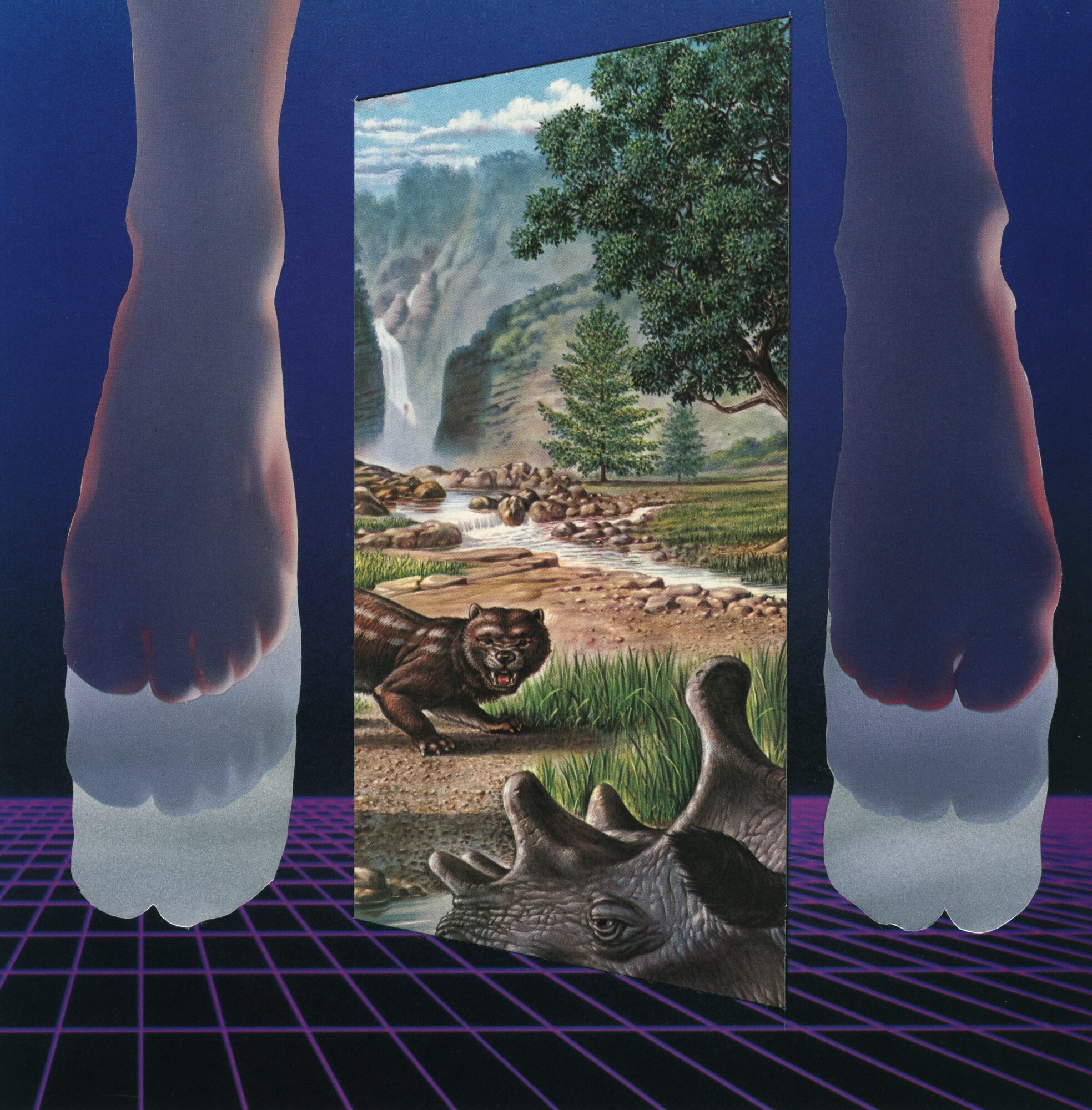
Hisham Akira Bharoocha, Reverse Historic Birth, 2013
Collage on paper
10 x 9 inches

Hisham Akira Bharoocha, Inter-Dimensional, 2017
Collage on paper
8 x 10 inches
Lawrence Lek 陆明龙, Dead Souls 亡灵’ from Temple OST 寺庙(原声大碟), 2020
VF344 – The Vinyl Factory
Soundscape on black vinyl, limited edition of 500
Courtesy of the artist and Sadie Coles HQ, London
Lawrence Lek 陆明龙, Hermitage 隐居 from Temple OST 寺庙(原声大碟), 2020
VF344 – The Vinyl Factory
Soundscape on black vinyl, limited edition of 500
Courtesy of the artist and Sadie Coles HQ, London
Lawrence Lek 陆明龙, Equinox 秋分 from Temple OST 寺庙(原声大碟), 2020
VF344 – The Vinyl Factory
Soundscape on black vinyl, limited edition of 500
Courtesy of the artist and Sadie Coles HQ, London
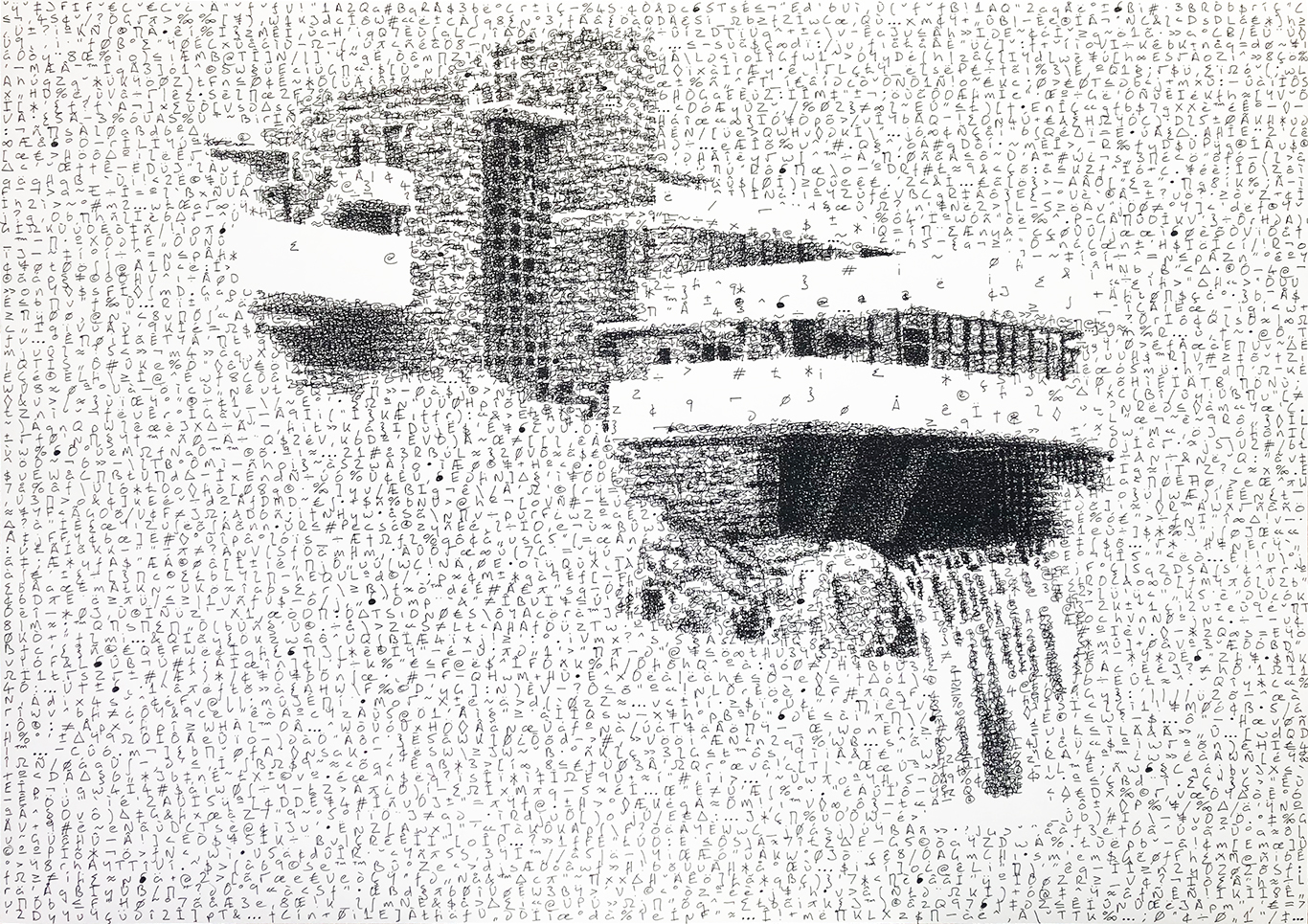
Geoff Henman, ‘https://media.architecturaldigest.com/photos/ 57571c84e84281483697495d/ 4:3/w_3200, h_2400,c_limit/fallingwater-frank-lloyd-wright .jpg (Accessed 18/11/19), 2020
Ink on paper
59.4 x 84.1 cm

Geoff Henman, ‘https://www.artnews.com/wp-content/uploads/2019/06/bridget-riley-over-gma-1316.jpg (Accessed 12/12/19)’. 2020
Ink on paper
84.1 x 59.4 cm
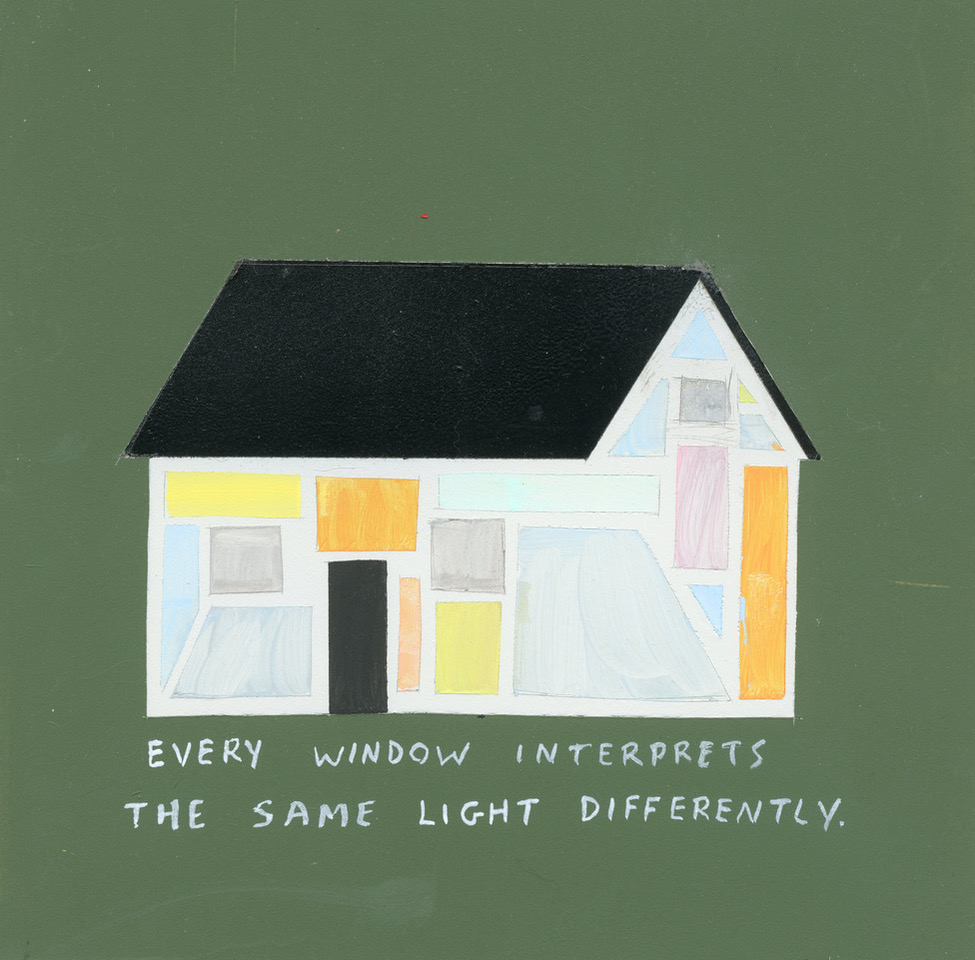
Neil Farber, Every window interprets the same light differently, 2018
Acrylic on MDF
6 x 6 inches
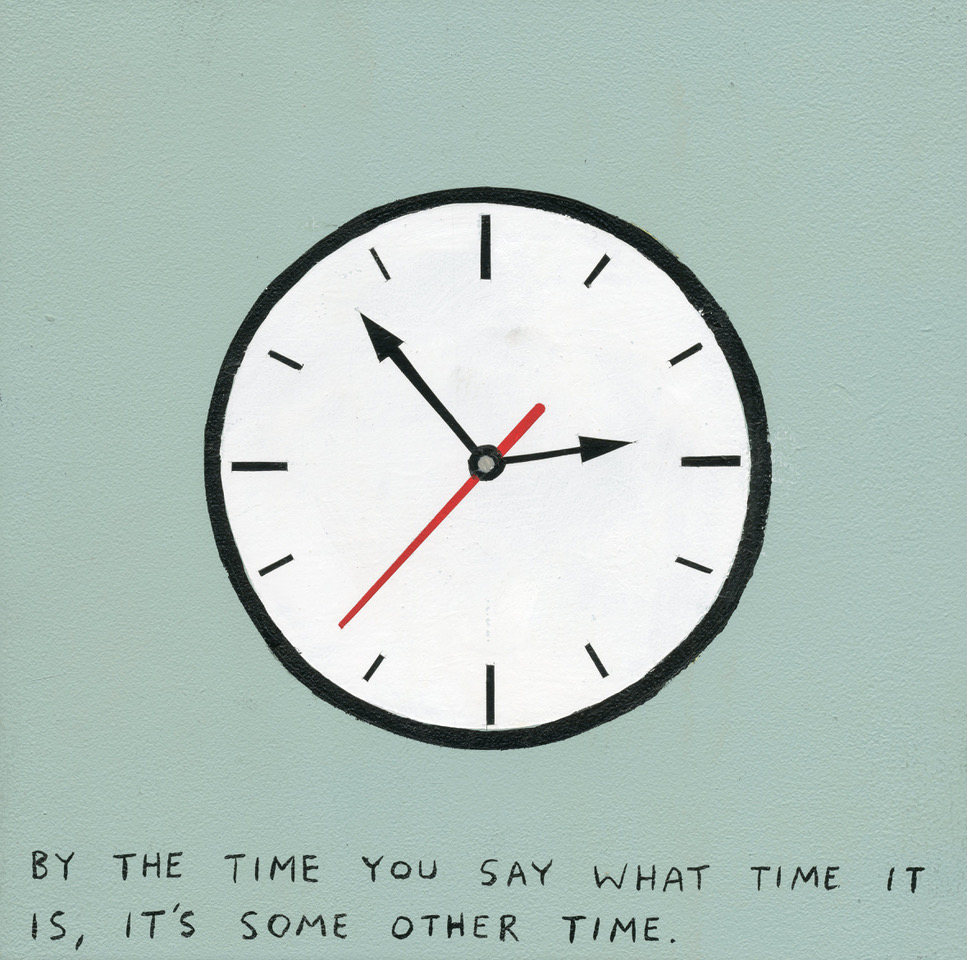
Neil Farber, By the time you say what time it is…, 2019
Acrylic on Birch panel
8 x 8 inches
Annika Kahrs, Alone Together, 2016
Performance
23 minutes
Performers: Philip Eick, Pierre Chastel, Mette Nadja Hansen, Johannes Müller. Musical arrangement: Louis d’Heudieres. Musical consultation: Felix Kubin
Four singers sing the piece of music Alone Together, written by Arthur Schwartz in 1932, before an audience in a generously proportioned hall. Each individual voice is transmitted respectively via a microphone to a loudspeaker: the listener can perceive both the harmonious interplay of all four voices within the space, and on approaching the respective speaker, each individual voice. At the conclusion of the piece the singers take their microphones and distance themselves from one another. While remaining in the same space they are no longer able to see each another and the extent to which they can hear one another is limited. Maintaining this positioning they repeat their vocal performance, but this time they sing the piece at only half its original speed. In a third repetition the singers now leave the space completely and sing the song at just 25 percent of the original speed. In this way, from the original three minute long piece is created a version that is approximately twelve minutes long. The singers, now fully isolated from one another and from the audience, must completely trust their inner tempo, their sense of rhythm and their performance, as their is no aid to help them keep time during the performance. More and more, the individual voices go astray, drift further and further apart, creating in the process a completely new piece. This new interplay of voices – both in its entirety and in its constituent parts – can only be experienced by the audience situated in the space.
Developed within the framework of ‘Immersion: Schule der Distanz No. 1’ as part of the Berliner Festspiele at Martin-Gropius-Bau, Berlin

Mathew Weir, A Fool’s Life, 2010
Oil on canvas mounted on board
54 x 40.5 cm
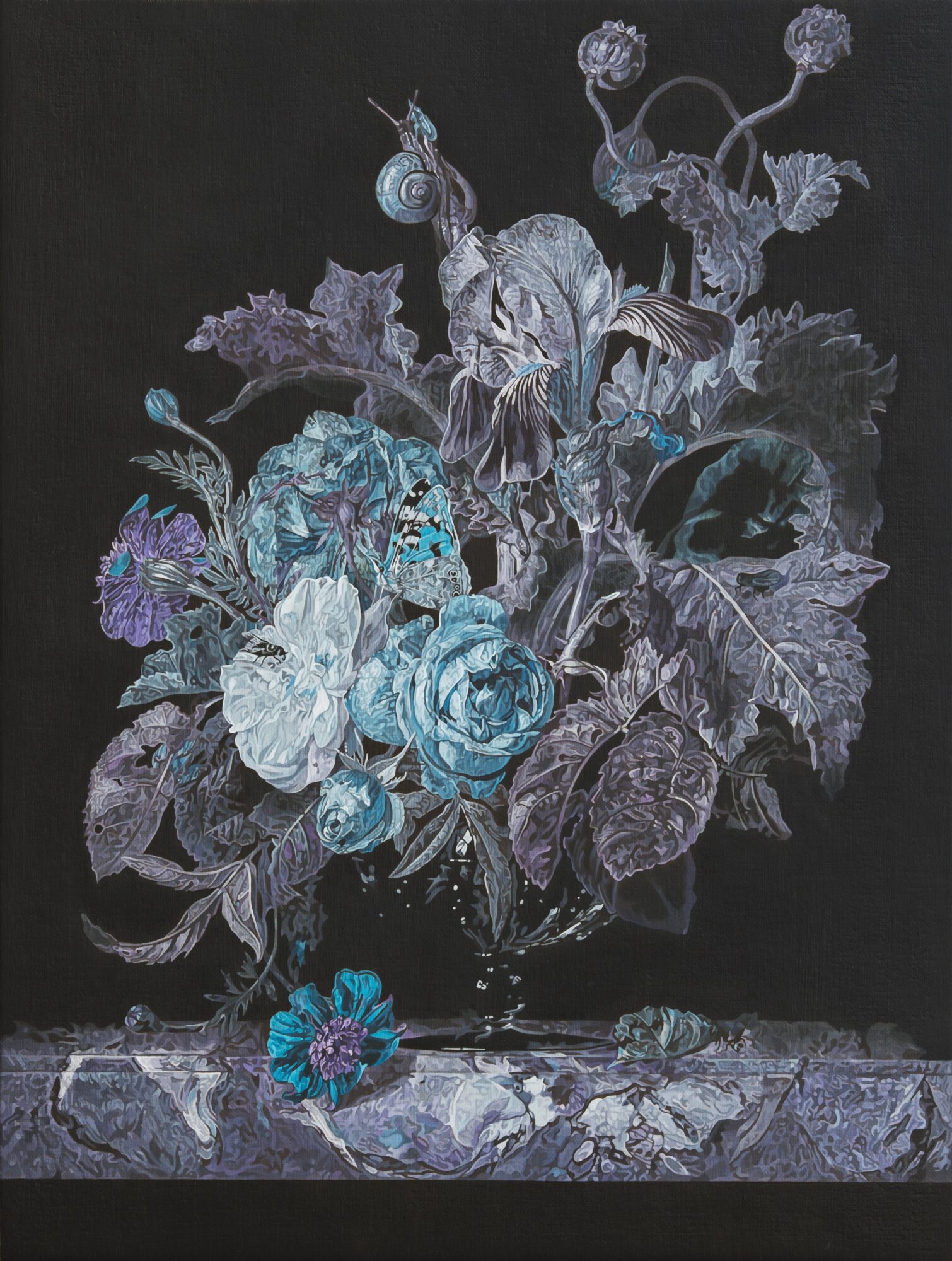
Mathew Weir, Indescribable Sadness, 2015
Oil on canvas mounted on board
41.5 x 31 cm

Nathan Witt, Lunchtime, 2017
A4
From the series ‘Notes on Epochs’

William Daniels, Real Time, 2020
Oil on board
36 x 27 cm

Tim Shaw, Qualities of Common Water, 2020 – ongoing
12 videos, 12 servers, global internet infrastructure

Erica Eyres, Jane Reading in Bed, 2020
Pencil on paper
88 x 68 cm

Erica Eyres, Sophie Staring at a Picture of Her Brother, 2020
Pencil on paper
92 x 66 cm
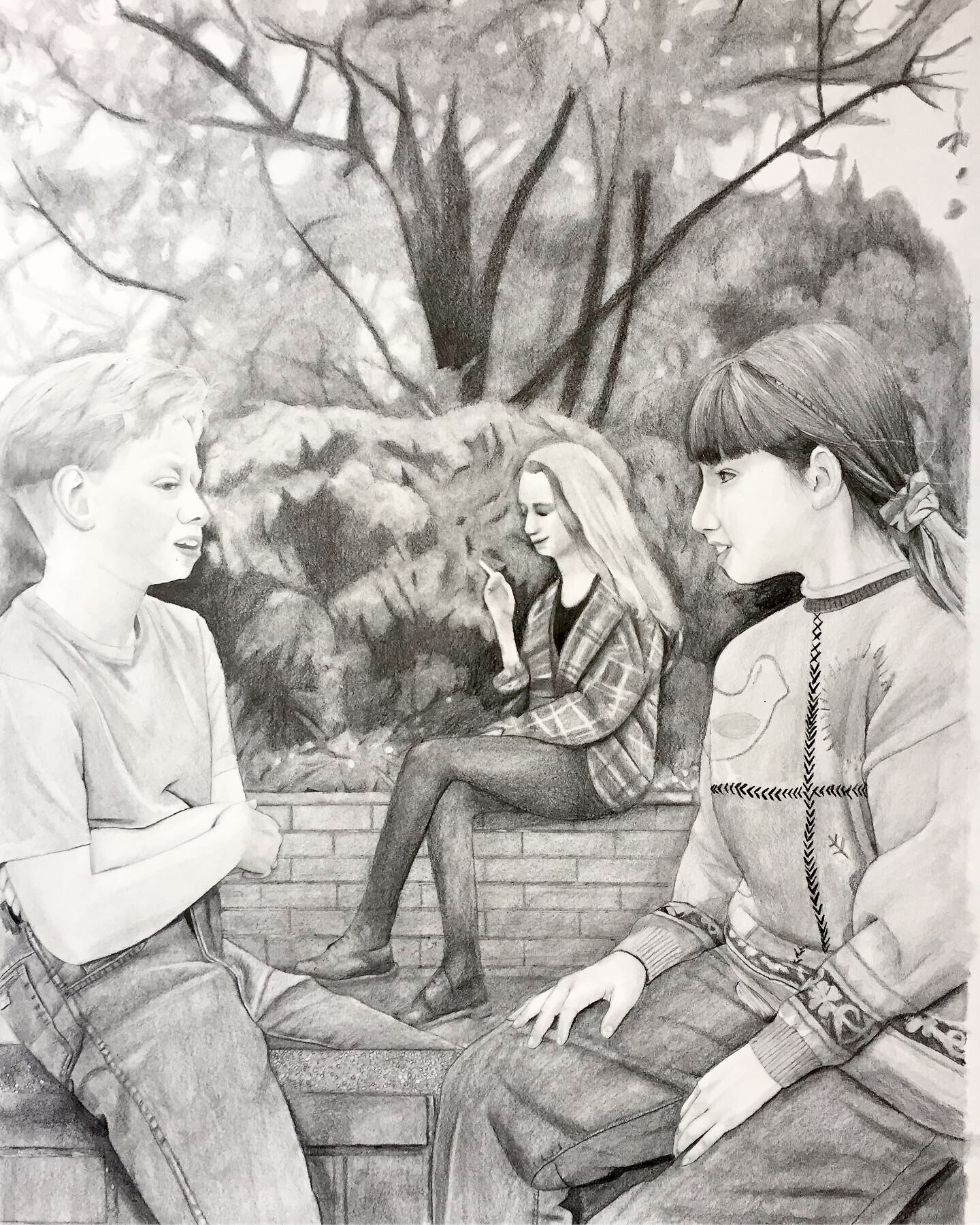
Erica Eyres, Children Sitting Near Smoking Teenager, 2020
Pencil on paper
88 x 66 cm

Christopher Orr, Everything Beautiful is Far Away, 2001
Oil on Canvas
72 x 48 cm
Photo credit: Royal College of Art

Christopher Orr, Nature Yet Remembers, 2019
Oil on Wooden Panel
40 x 30 cm
Photo credit: Royal College of Art
Nina Canell, A Passage from Neptune the Mystic, 2011
Sound work
6 minutes 54 seconds
Taking its cue from the last musical passage of Gustav Holst’s Neptune the Mystic from 1916 (in which Holst supposedly conceived of the first intentional ‘fade-out’ in music), Nina Canell and Robin Watkins made this extended version in 2011, recording a four piece choir in a church in Cologne. Holst’s original score does not specify a duration, instructing a small female choir to be situated in a room adjacent to the auditorium, while the door was to be gradually and silently closed “until the sound was lost in the distance”. Originally published as a 10” edition by Kunsthalle Fridericianum, Kassel.
Laura Mulvey & Peter Wollen, Riddles of the Sphinx, 1977
Chapter 11 – Louise’s story: shopping
Laura Mulvey & Peter Wollen, Riddles of the Sphinx, 1977
Chapter 4 – Louise’s story: kitchen

Nigel Cooke, Mimosa in Valbonne (Writer Slumped at the Base of a Tree), 2012
Oil on linen backed with sailcloth
320 x 230cm
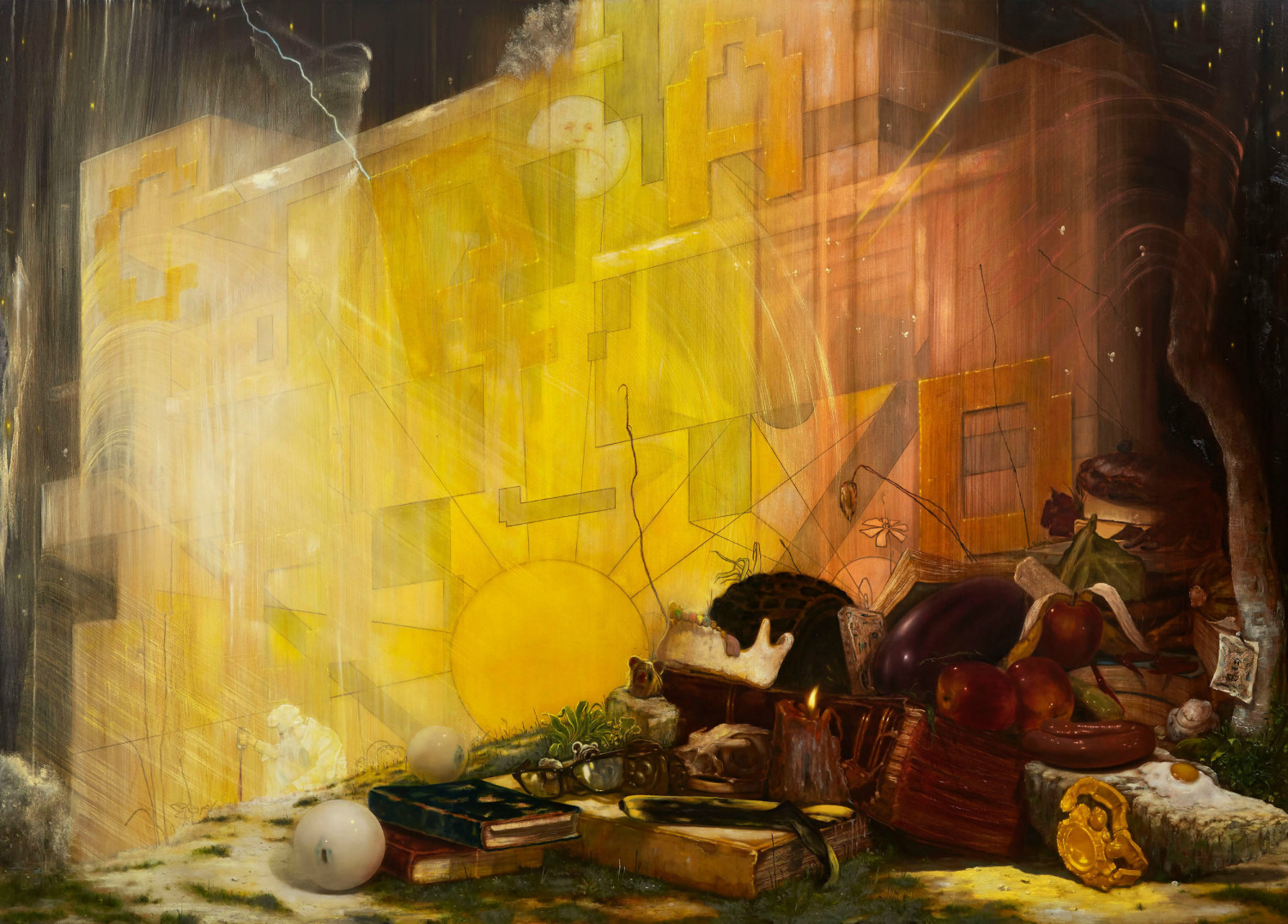
Nigel Cooke, Hubris, 2012-13
Oil on linen backed with sailcloth
320 x 230cm
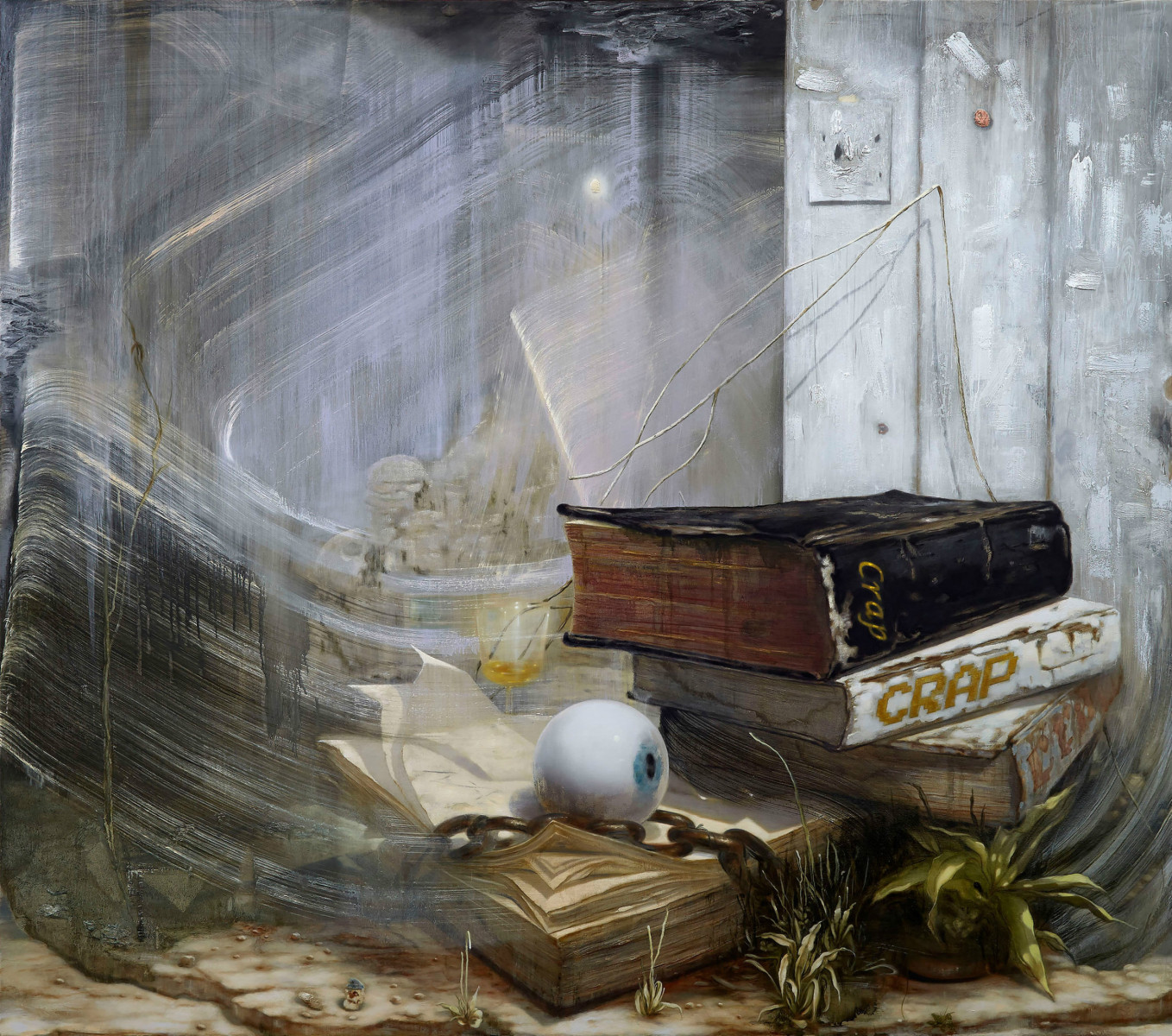
Nigel Cooke, Captain’s Cabin, 2012-2013
Oil on linen backed with sailcloth
220x195cm

Nigel Cooke, Bathers, 2011
Oil on linen backed with sailcloth
370 x 220cm
In other words, the time we are dealing with is troubled and undecidable. Often it is accelerated, anticipatory, and repetitive. The art of the sixties, this book argues, produced an understanding of this time that I call chronophobic, a neologism that suggests a marked fear of the temporal. Cutting across movements, mediums, and genres, the chronophobic impulse names an insistent struggle with time, the will of both artists and critics either to master its passage, to still its acceleration, or to give form to its changing conditions.
Pamela M. Lee, ‘Chronophobia: On Time in the Art of the 1960s’, (2004) The MIT Press, Pp 7-8
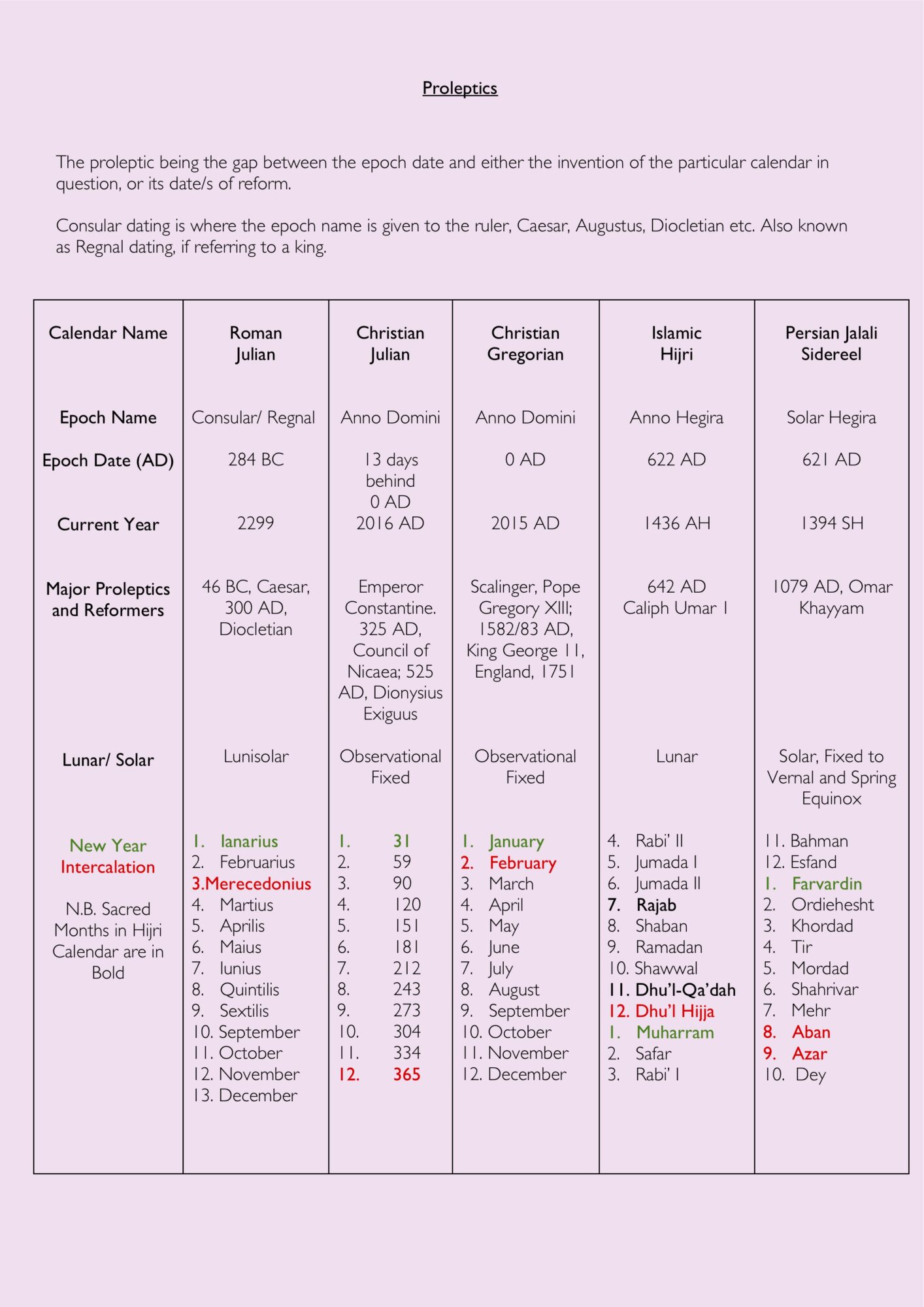
Nathan Witt, Proleptics, 2014-16
A4
From the series ‘Notes on Epochs’

Nathan Witt, Prolpetics, 2014-16
A4
From the series ‘Notes on Epochs’

Nathan Witt, Prolpetics, 2014-16
A4
From the series ‘Notes on Epochs’
Lee Gamble
Radio show on NTS, 13th July 2020
Ami Clarke, Lag Lag Lag
Single screen export of 8 screen video and audio work, financiers interface, developed with live sentiment/emotion analysis re mention of BPA in twitter, online news
10 minutes 01 seconds
Lag Lag Lag co-opts the financiers tool of live sentiment analysis of online news production and social media, relating to BPA’s (Bisphenol A), to consider how surveillance, rather than a rogue element of capitalism, enmeshes with the effects of market forces upon the environment, happening at a molecular level. The interface enmeshes human cognitive as well as non-cognitive processes, blurring human/animal in-distinctions with soft computing, the molecular structure of Bisphenol A, and live data production, that come of, and are revealed by, the interdependent ecologies of social media, finance, and the environment. The work pre-empted many of the conditions brought into sharp focus by the pandemic, foregrounding insurance as a means to consider how models of probability reveal the deleterious effects of capitalism upon the environment, as ‘unprecedented’ events become increasingly everyday, and a state of contingency becomes a modus operandi – across both the mediasphere and the markets. The work points to the extractive protocols of the meme that is capitalism; ‘platform’, ‘surveillance’, late, as well as ‘disaster’, and how these converge in digital neo-colonialisms, as well as historical colonialisms, that manifest in practices of aggressive tax evasion as ongoing forms of economic oppression. The work emphasises an important aspect of the climate challenges ahead will be to address present inequalities borne of colonialism, with legacies often to be found in geographical locations with projections of the most volatile environmental futures.

Wade Wallerstein, Research into the virtual world of Toontown Online, 2020
“Toontown Online” was a massively-multiplayer online role playing game created by Disney that was popular between 2003 and 2013. In the game, players created and embodied Disney-style animated cartoon characters, and traversed a cheerful virtual world based upon Disney’s most famous classic characters. In Toontown, players use ‘gags,’ or practical jokes, to fight evil corporate “cogs” and save the town from total annihilation by the suit-wearing bad guys.
In 2013, Disney announced that Toontown’s servers were to be closed forever in order for the company to focus on other and more popular games and content. It was rumored that the business model had become unsustainable.
After the game’s closure, former players of the game created their own crowdsourced private servers of the game, which is now called Toontown Rewritten and freely/publicly available to everyone. The creators have held true to the original spirit of the game, keeping the tiny digital world up-and-running, and have even begun to implement some of the changes and upgrades that the original Toontown creators had attempted to implement.
A gem lost in time, the game exists like a tangible memory–rendered and explorable. What was once a popular game for kids is now mostly populated by adults reliving precious virtual moments from the past. Roughly 1,000 or so users log in every day to spend time in this isolated throwback world, and they take its logic and specific social customs very seriously.
One of the most interesting phenomenon in the game is the Beanfest, in which players can use special tokens that they receive from fighting dungeons to distribute the in-game currency (jellybeans) to other players. Players gather on a single server channel, with no centralized organization, and congregate in one of the many virtual town squares in the world. They wait for hours, anticipating the moment when a philanthropical fellow player might send out jellybeans into the crowd. At the moment when the beans are distributed, there is utter chaos as fervent players clamber over one another to receive jellybeans and shout out excited and delirous messages via the game’s in-game chat function.
I spent a few months researching and spending time with the communities that are active with Toontown, and documented my time within the group dungeon areas and Beanfest occurences. The result shines light on a somewhat lost-but-not-forgotten corner of the net, vibrantly kept alive by the enthusiasm of its inhabitants.
– Wade Wallerstein
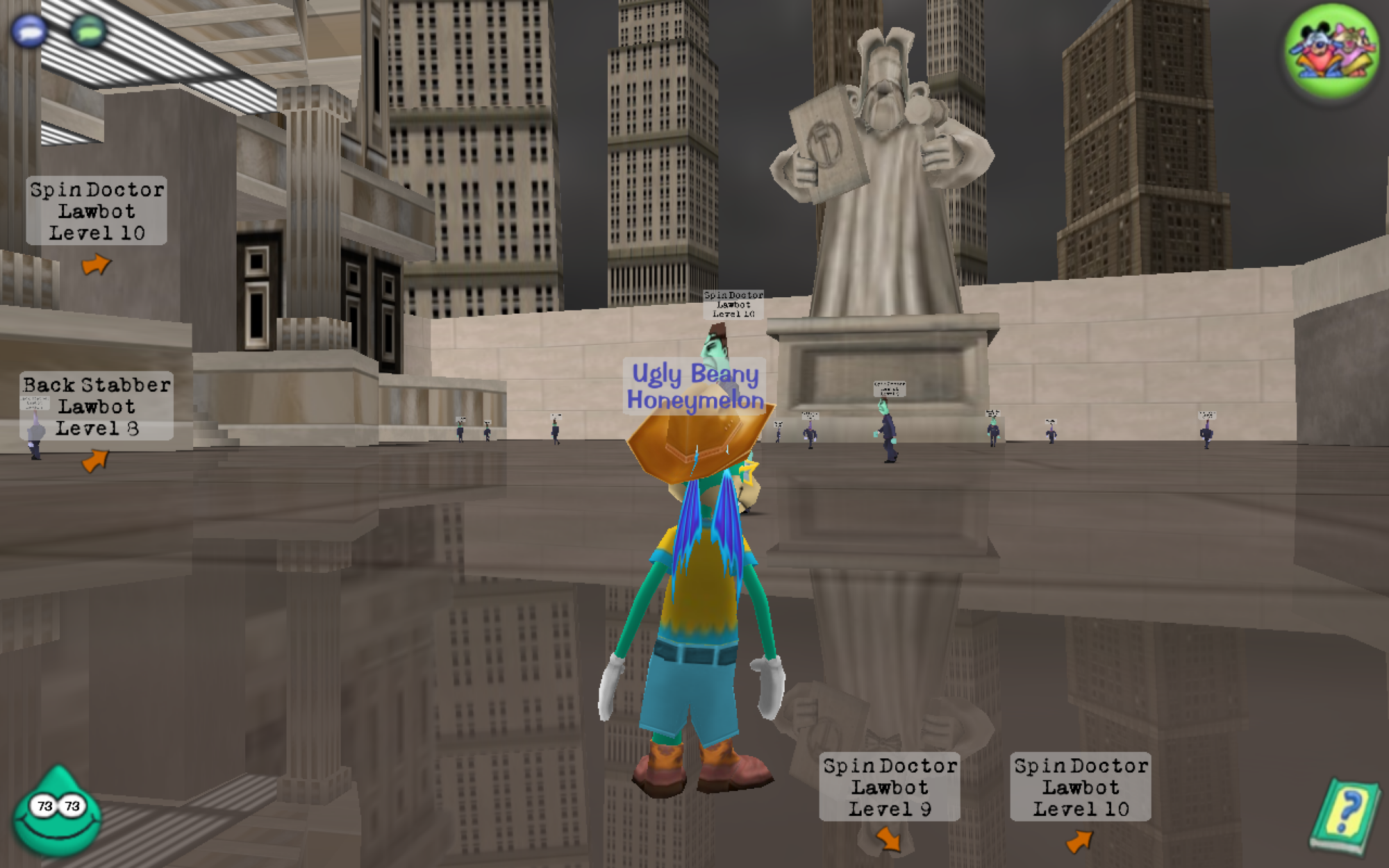
Wade Wallerstein, Research into the virtual world of Toontown Online, 2020

Wade Wallerstein, Research into the virtual world of Toontown Online, 2020

Wade Wallerstein, Research into the virtual world of Toontown Online, 2020
Cav Empt, Tokyo store project during C-19 closure, 2020
Instagram live documentation
Cav Empt, Tokyo store project during C-19 closure, 2020
Instagram live documentation
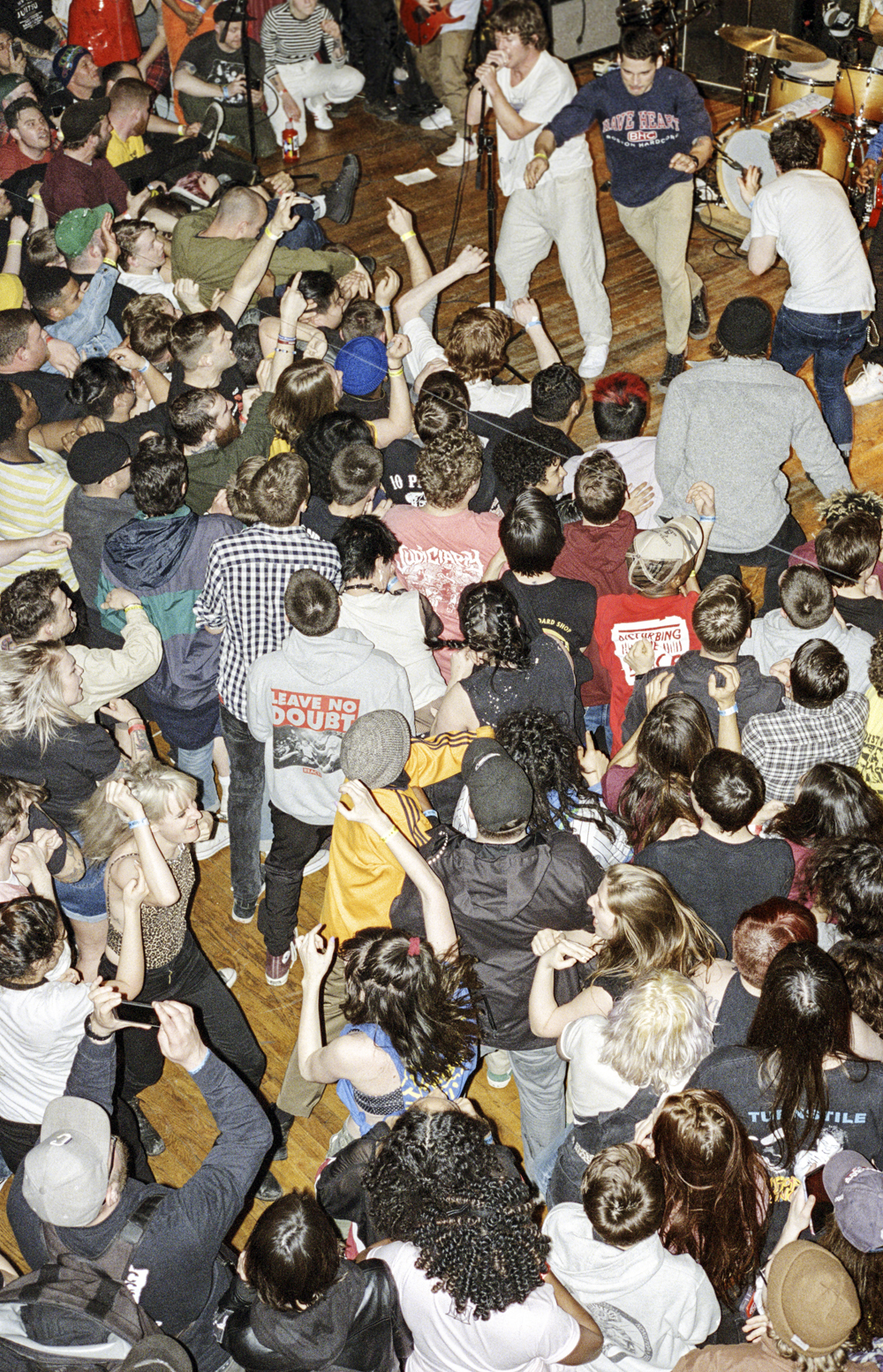
Simon Parris, All Souls Church, Unitarian, Washington, D.C., April 2018

Simon Parris, The Tubes, The Lower Bottoms, West Oakland, California, April 2019
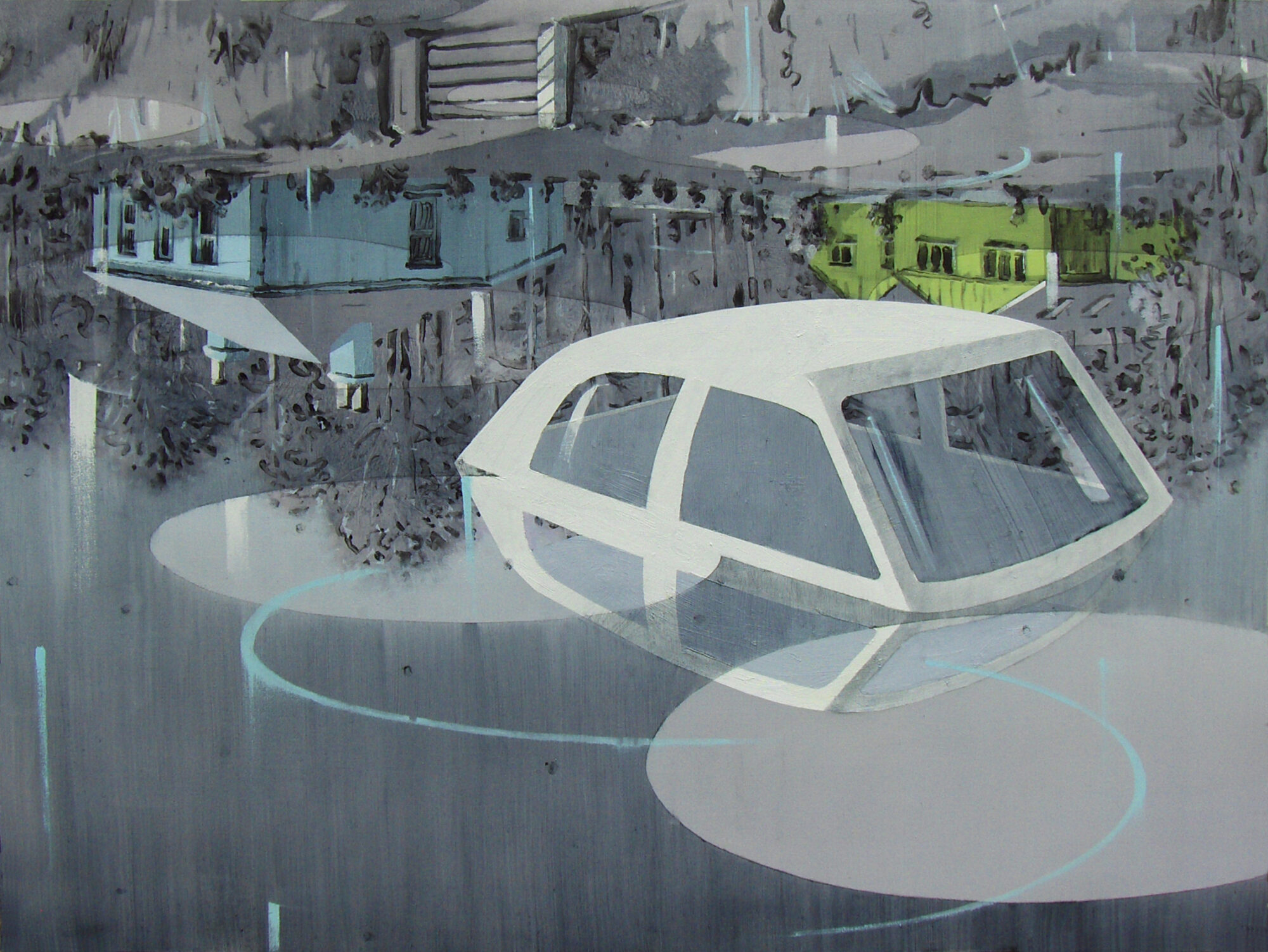
Graham Crowley, White Micra, 2018
Oil on canvas
90 x 120 cm
Black Quantum Futurism, Waiting Time/Weighting/Wading Time: On Juneteenth, Watch Night, Freedom’s Eve, and Emancipation Day, 2020
Three soundscapes and PDF zine
Link to publication: Black Quantum Futurism – Waiting Time-Weighting-Wading Time- On Juneteenth, Watch Night, Freedom’s Eve, and Emancipation Day – BQF Juneteenth Zine
Black Quantum Futurism is an artistic and literary collaboration between Camae Defstar (Rockers!; MMGZ) and Rasheedah Phillips (The AfroFuturist Affair; Metropolarity) which explores the intersections of futurism, literature, art, sound, creative media, DIY-aesthetics, and activism in marginalised communities. music/soundwaves produced by BQF collective.

Melissa Agate, Giant Rock, Geological Explorations (ongoing)
120mm film, 6×7 medium format
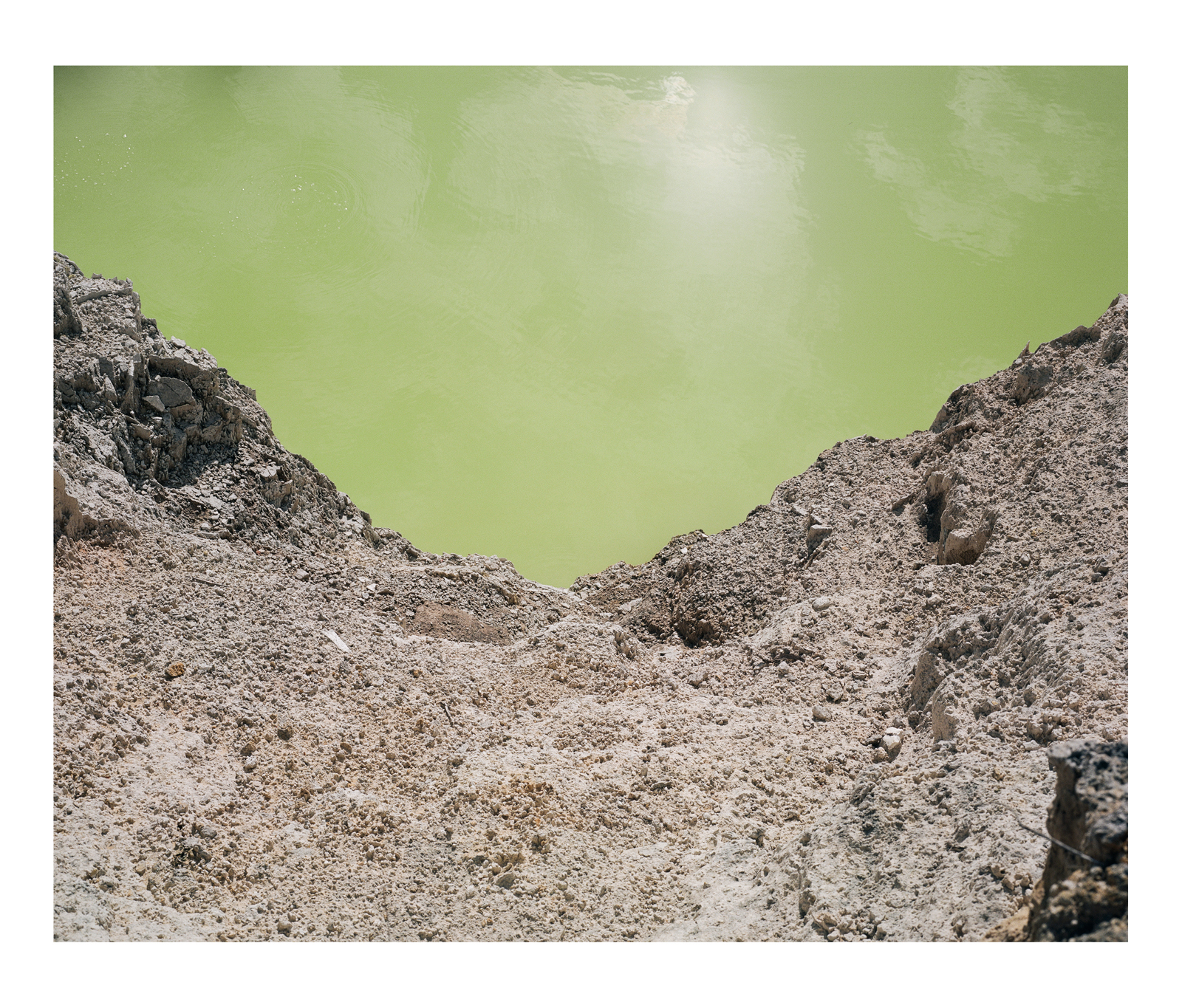
Melissa Agate, Devil’s Bath, Geological Explorations, (ongoing)
120mm film, 6×7 medium format

Melissa Agate, Giant Rock 2 Geological Explorations, (ongoing)
120mm film, 6×7 medium format
Larry Achiampong & David Blandy, Finding Fanon Part 2, 2015
Single channel video with sound
9 minutes 13 seconds
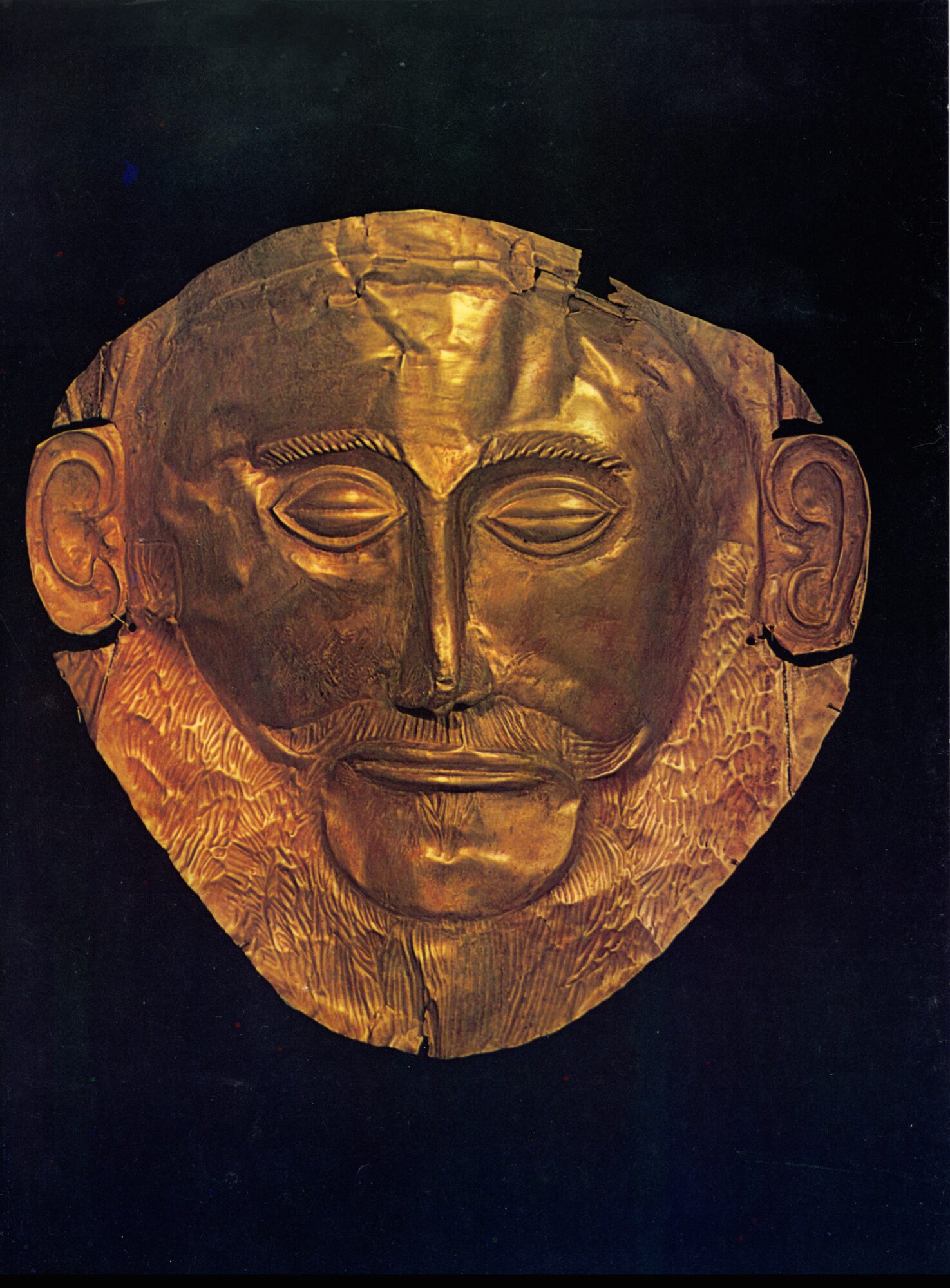
Haris Epaminonda, Untitled #03 a/j, 2020
Framed found book page
31.2 x 23.9 x 2.5 cm
Unique
Image courtesy of the artist
 Jeanine Woollard, J C, 2009
Jeanine Woollard, J C, 2009Digital C-print,
25 x 37cm

Jeanine Woollard, O, 2009
Digital C-print,
30 x 45 cm

Isabel Mallet, Way of the Hawk-Bat, 9th July 2020
Radio show on RTM.FM
https://rtm.fm/shows/twang-achoo-clang-oooff/isabel-mallet/
Track list:
Rage Against The Machine interviewed on BBC Radio 5 Live (2009)
Black Death – Night of The Living Death (1984)
Chino Amobi – BLACKOUT (2017)
Patten – Orion (2019)
Linton Kwesi Johnson – Inglan Is A Bitch (1980)
Autopsy – In the Grip of Winter (1991)
Chase & Status – Murder Music Feat. Kabaka Pyramid (2019)
Barry & Glodean White – Our Theme Parts I and II (1981)
Audre Lorde interviewed by Blanche Cook for Women and the World Radio(1982)
Light Asylum – Dark Allies (2010)
Geo Wyeth – THE RESPONSE MADE THE CALL (2020)
MC5 – Looking at You (1970)
Fernando Falcão – Curimão (Sons Onomatopaicos E Folk Da Guiné) (1981)
Nathaniel Mackey, Royal Hartigan, Hafez Modirzadeh – Song Of The Andoumboulou 19 (1995)
Adam Elliott Cooper interviewed on BBC News (2020)
Medieval – Plague (1983)
Bicep – Glue (2017)
Judas Priest – Hell Patrol (1990)
Burkhard Meltzer, Precarious temporalities, May 2020
PDF text
https://burkhardmeltzer.net/en/

David Wightman, Helena
Acrylic and collaged wallpaper on canvas
70 x 105 cm
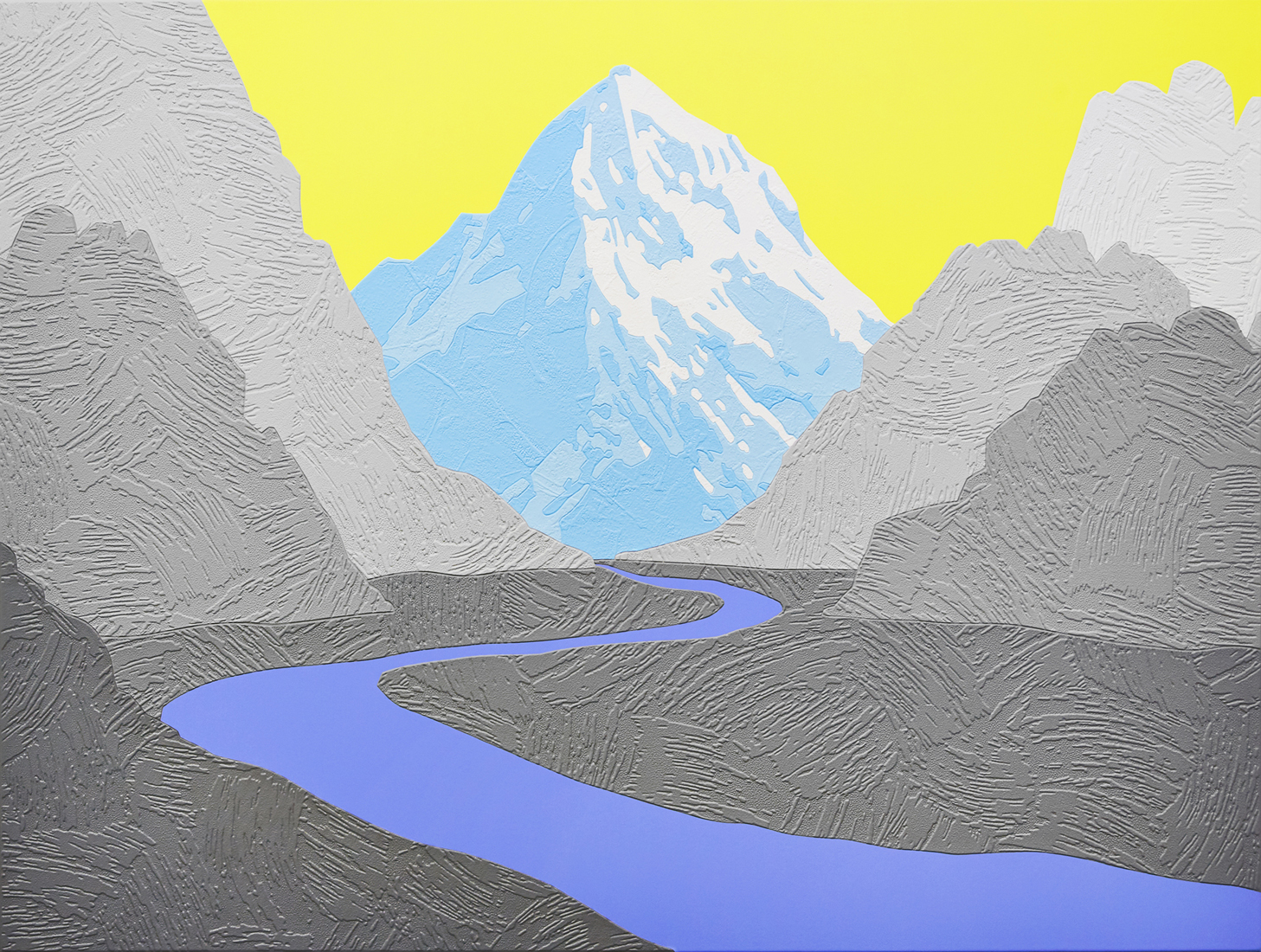
David Wightman, Ariadne iii
Acrylic and collaged wallpaper on canvas
90 x 120 cm
Ram Dass & Boreta, Imagine, 2018
Imagine is an immersive project that blends a very unique early 70’s Ram Dass meditation with an audio soundscape created by Boreta (of The Glitch Mob). This video was created to accompany the piece as a visual meditation, to invite you to submerge yourself into the depths of your consciousness, to discover the possibility of truth

Sougwen Chung, Mutations of Presence, 2020
Mixed Media on Canvas
42 x 56 inches
© Sougwen Chung. Courtesy the artist
www.sougwen.com/project/mutations-of-presence-2020
Caribou, The Longest Mixtape – 1000 Songs For You, 2015-ongoing
Playlist – listen on shuffle
https://www.youtube.com/playlist?list=PL4lEESSgxM_5O81EvKCmBIm_JT5Q7JeaI
Caribou – The Longest Mixtape 1000 songs on Spotifyopen.spotify.com › playlist
The last few years of my life have been incredible, thanks in large part to all of you – so I’ve been thinking of how to say thank you. As you can imagine, music has been a central love of my life since I was a teenager and over the years I’ve been introduced to a lot that has stayed with me. I’ve collected the majority of that music here – and I thought sharing it with you seemed like one way I could say thanks. I’m sure some things are under-represented or over-represented, but roughly speaking this is a musical history of my life. Of course a lot of this music has come to me through my friends – thank you to Koushik, Kieran, Jeremy, Gary, Brandon, Jason, Sam, Ketan, Ryan, Toby and many others… Also, please share music with me that you think I would like but is not included here, in the hope this becomes a dialogue rather than a monologue. I suggest you listen to this on shuffle as I made no attempt to sequence these tracks – I just entered them as I browsed along the shelves in my record collection. If you see dead links or duplicate songs please tweet me.
– @caribouband
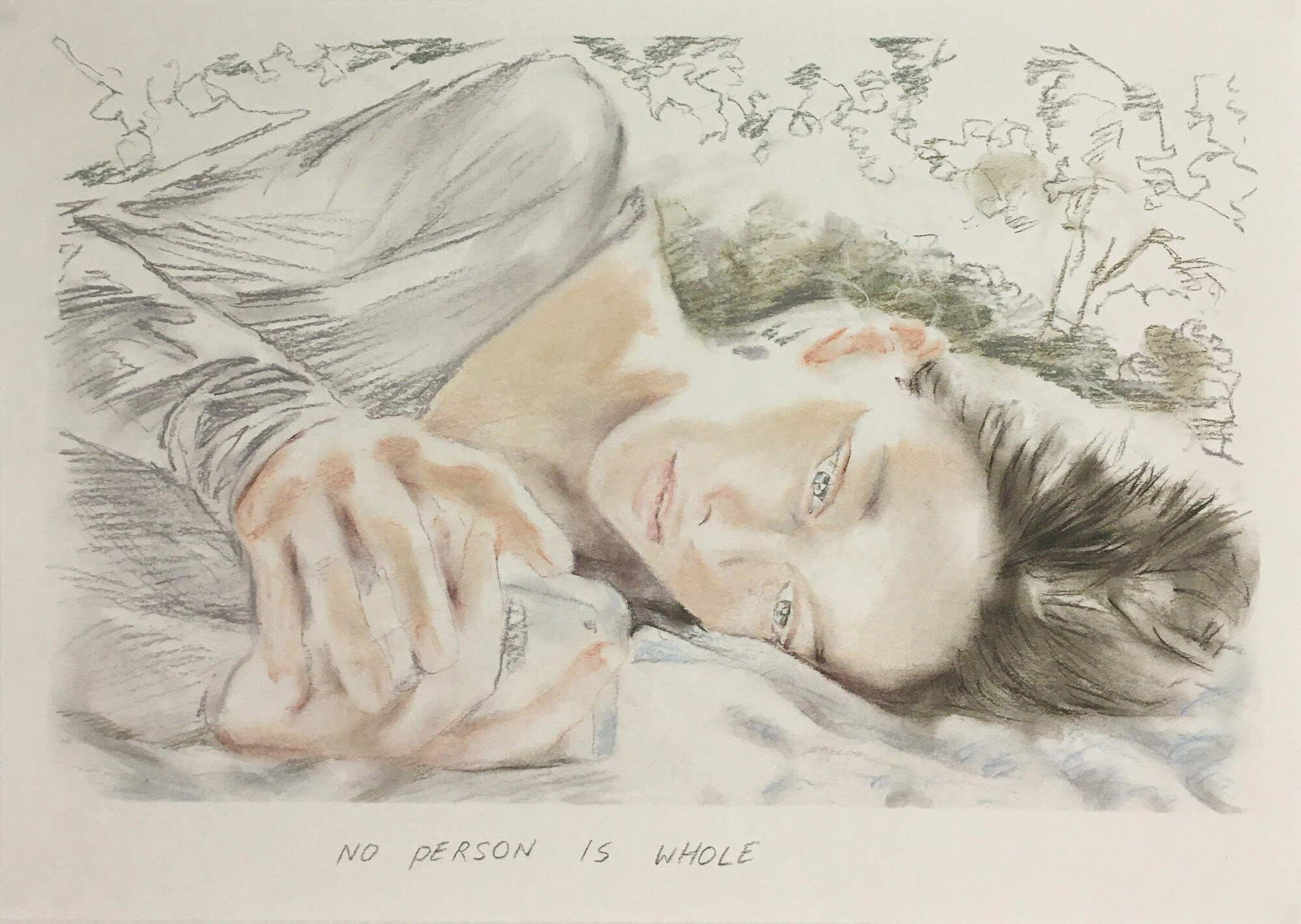
Muntean/Rosenblum, Untitled, 2020
Chalk on paper
29.7 x 42 cm
Photo: Muntean/Rosenblum
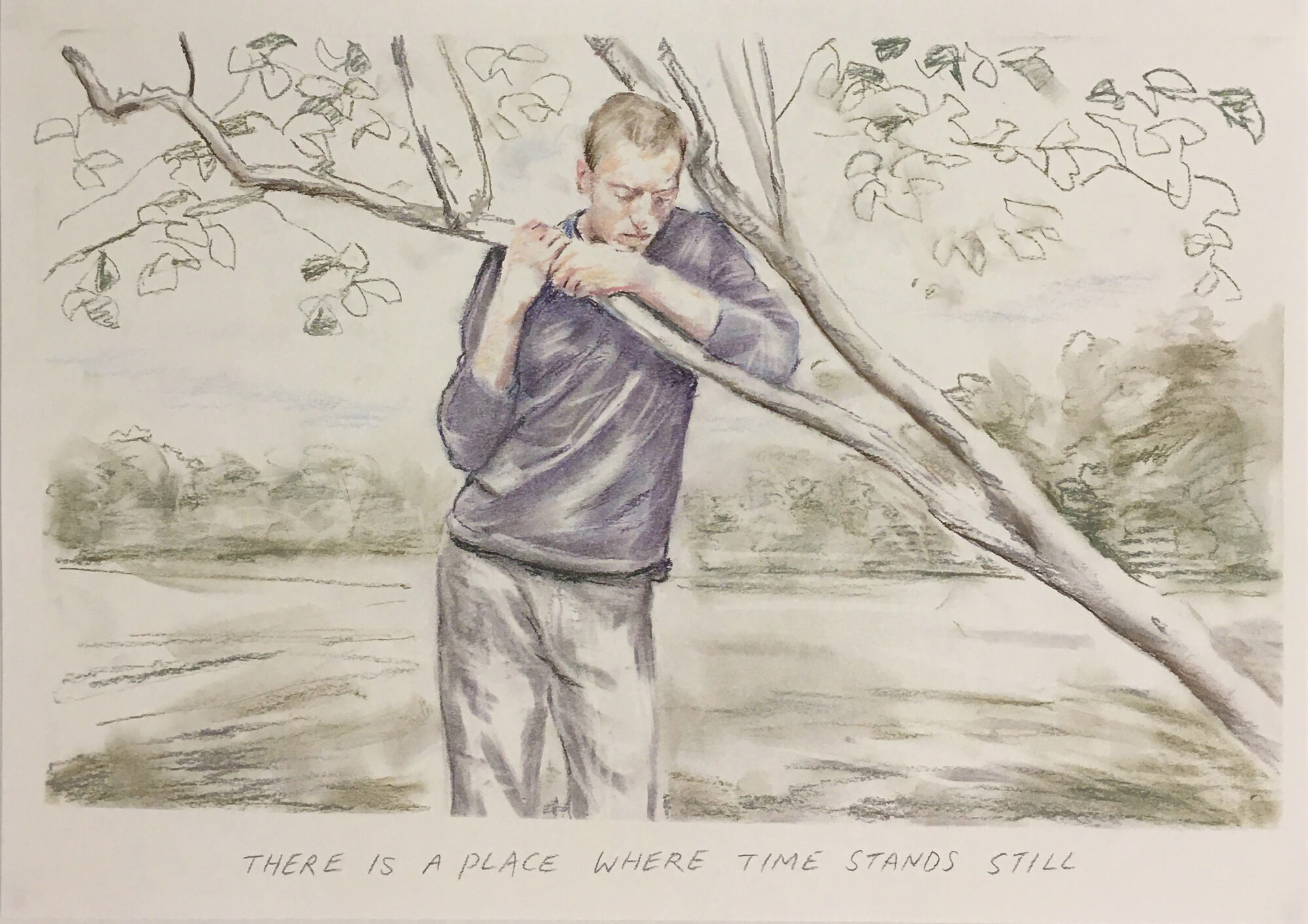
Muntean/Rosenblum, Untitled, 2020
Chalk on paper
29.7 x 42 cm
Photo: Muntean/Rosenblum

Muntean/Rosenblum, Untitled, 2020
Chalk on paper
29.7 x 42 cm
Photo: Muntean/Rosenblum
Soundfile
31 minutes 11 seconds
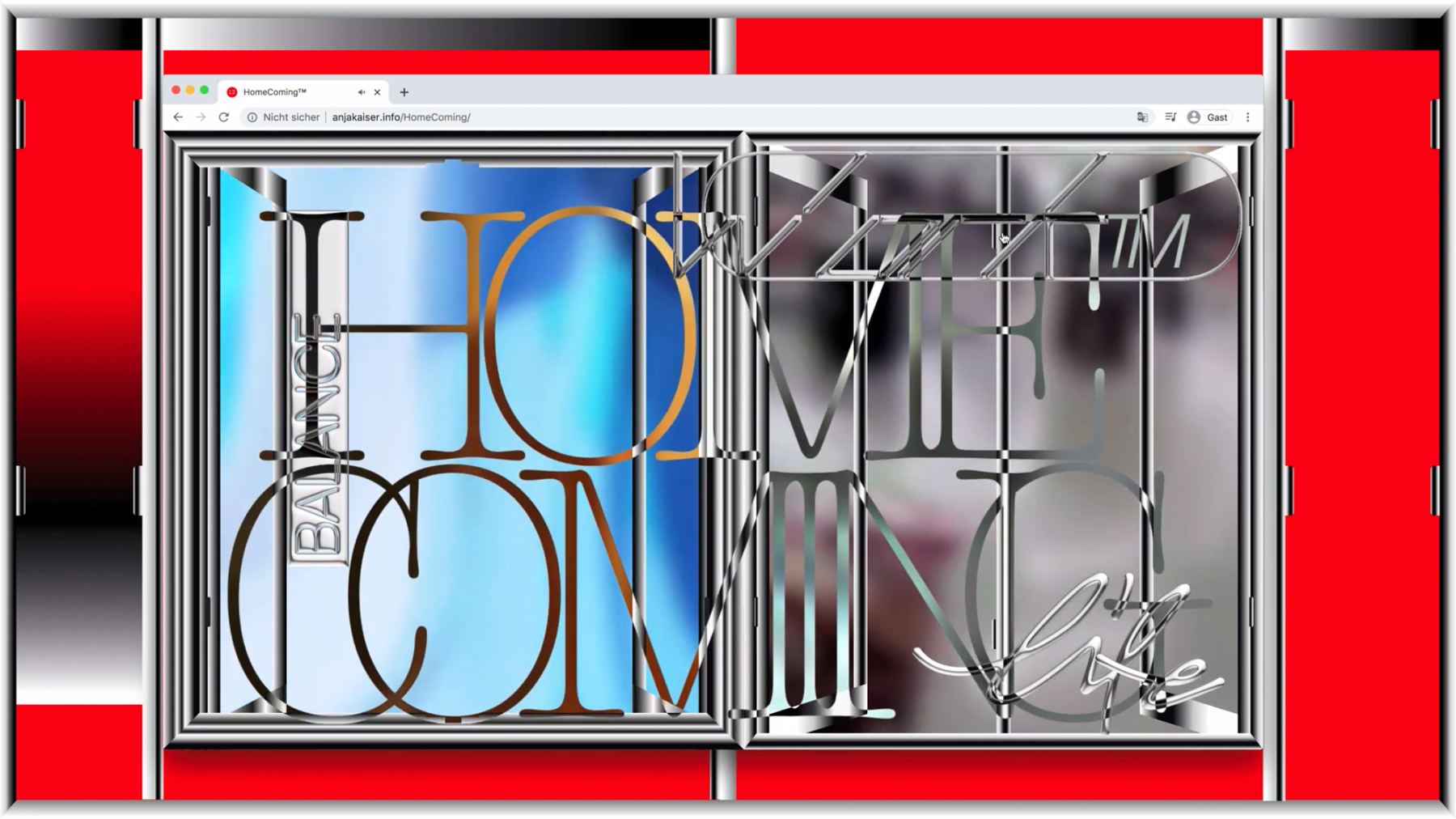
Home Coming™ is a web based screensaver album release to enhance your home office. In three easy steps Jonas Holfeld (audio + code) and Anja Kaiser (visuals) offer a tender outlook on a culture of unhindered access to devices.
Full browser experience ⤵︎ http://anjakaiser.info/HomeComing/
Here you’ll find a short documentation of the website. https://www.youtube.com/watch?v=oj8XCXsTW74&feature=emb_title

Anne Hardy, Incidence, 2009
C-type diasec mounted print
133 x 165.5 cm
Courtesy Maureen Paley, London
Lawrence Weiner, & THAT WAS THE TROUBLE WITH ARISTOTLE …, 2010
Radio program
14 minutes 29 seconds
Commissioned by Centre National Des Arts Plastiques, Paris, curated by Daniel Kurjakovic.
Sound engineer: Gilles Mardirossian
Voices: Martine Aboucaya, Florence de Tugny, Sandra Doublet, Alain Kantarjian, Stéphanie Lefèbvre, Yves-Marie Rinquin, Damien Sausset, Vittorio Santoro and Lawrence Weiner.
Produced by Studio of Radio France: France Culture, Atelier de Création Radiophonique. Paris 2010
First aired on France Culture, Atelier de Création Radiophonique, 93.5 FM, October 31
Tauba Auerbach, Extended Object, 2020 Tauba Auerbach, Extended Object (detail), 2020 Tauba Auerbach, Extended Object (detail), 2020 Tauba Auerbach, Extended Object, 2020 Tauba Auerbach, Extended Object (detail), 2020 Tauba Auerbach, Extended Object (detail), 2020 Scroll is a digital animation that evolved from the artist’s re-reading of A History of the Modern World (1950), a history textbook now in its twelfth edition and still used widely in US schools. Responding to the subjective process of reading (as well as writing) history, Shovlin took twelve different copies of the book, from the first edition to the latest, and extracted passages of text that had been highlighted and underlined by readers. Retaining the ‘historical’ order of the fragments, Shovlin compiled them into the text-based animation that continually rolls across the screen. The animation’s audio track is composed from twelve automated Western female voices that ‘read’ the scroll with the age of each voice approximate to the age of the edition from which each extract is taken. Keiken + George Jasper Stone, Feel My Metaverse Trailer, 2019 Keiken + George Jasper Stone, Animatic Poster (Shark), 2019 Gordon Cheung, The Promised Land, 2009 David Blandy, How to Live, 2020 Simon Denny & Matt Goerzen, Deutsche Telekom Evernote Berlin Hackathon Intervention, 2013 Actors: Sabrina Modenini / Andrea De Manincor The film is a re-enactment for camera of a live performance. Two actors, a man and a woman in their late forties, are portrayed moving around a half-empty villa while enacting an escalating argument. Gilbert & George, SLEEPY, 1985 Lucinda Chua, Aquarium Music Lucinda Chua, Body Ache Fennesz, Endless Summer Link to >>>> https://sunset-provision.com/ Mica Levi, Monos, 2019 Francesca Gavin, Traum and Trauma, 2020 Plato saw dreams as the expression of the lower, unreasonable parts of the psyche. In his view, the virtuous were content to dream of what the evil does in life. Our traum (dreams in German) are also a manifestation of our trauma. During my isolation, which still continues, I have been drawn to my bookshelves many times in search of visual imagery that captures something of my emotional state. Pictures of the gaze, of dreaming, of rebirth and perhaps also of trauma. Images that I let my eyes slowly wander over, almost like a form of lucid dreaming. Francesca Gavin, Digital photograph of vintage book page Francesca Gavin Francesca Gavin, Digital photograph of vintage book page Francesca Gavin, Digital photograph of vintage book page Francesca Gavin, Digital photograph of vintage book page Francesca Gavin, Digital photograph of vintage book page Francesca Gavin, Digital photograph of vintage book page Francesca Gavin, Digital photograph of vintage book page Francesca Gavin, Digital photograph of vintage book page Hiraki Sawa, absent, 2018 Dan Holdsworth, Hyperborea 06, 2006 Dan Holdsworth, Hyperborea 09, 2006 Dan Holdsworth, Hyperborea 08, 2006 Cerith Wyn Evans, Neon forms (resembling clouds…), 2014 Cerith Wyn Evans, It is a world in which something is missing., 2012 Anna Barriball, Sunrise/Sunset XIII, 2017 Armando Andrade Tudela, Billboard #1, 2003/04 Armando Andrade Tudela, Billboard #4, 2003/04 Armando Andrade Tudela, Billboard #2, 2003/04 Armando Andrade Tudela, Billboard #9, 2003/04 Simon Dybbroe Møller, Animate V, 2012 Bronze x Jai Paul Jordon Wolfson, Untitled, 2012 Keiken, ourmetaverse.live, Ongoing Head to @_keiken_ ‘s website ourmetaverse.live (best experienced via desktop) ourmetaverse.live is a live gamified website to store digital assets and as a collaborative space for Keiken’s growing metaverse. OUR METAVERSE contains: INVENTORY of digital assets, GROW YOUR METAVERSE, a collective learning space, PANDO, to explore the collaboration with @sakeemathecrook and her character Pando, and METAVERSE TV where you can watch the film FEEL MY METAVERSE. It is a networked and collaborative space to explore these speculative worlds. Over the next four weeks, as part of Real Time, we will be showing and revealing different parts and assets of the gamified site. -Keiken Keiken, ourmetaverse.live, Ongoing Keiken, ourmetaverse.live, Ongoing Keiken are a collaborative practice, co-founded by artists Hana Omori, Isabel Ramos and Tanya Cruz in 2015, they frequently work with multiple collaborators. Based between London and Berlin, they come from mixed diasporic backgrounds (Mexican/Japanese/European/Jewish). Keiken, Japanese for experience, create speculative worlds. They merge the physical and digital, “phygital”, using moving-image, CGI, gaming software, installation, virtual/augmented reality, programming and gamified performance. Simulating new structures and ways of existing they explore how societal introjection governs the way we feel, think and perceive. Keiken, ourmetaverse.live, Ongoing Recent projects include Augmented Empathy at FACT, Liverpool (2020), Feel My Metaverse with gamified performance Behind this Screen I am on the Real Earth for transmediale at HKW, Berlin (2020), Feel(s) 360 for Image Behaviour at ICA, London (2019) and Feel My Metaverse alongside long term collaborator George Jasper Stone for Jerwood Art’s Collaborate!, London (2019), Frankfurter Kunstverein, Frankfurt (2020) and for König Galerie’s The Artist Is Online (2020). Keiken have shown work at IMPAKT Festival, Utrecht; Hervisions at LUX Moving Image; Space Art + Technology, London; MIRA Festival, Barcelona; and Tate St Ives. From the artist’s archive and courtesy of Victoria Miro Gallery, Stephen Willats has kindly contributed this interview on avant.org which focuses on his long running publication, Control. The interview begins: See http://avant.org/artifact/stephen-willats/ for the full text. Sung Tieu, 51°28’29.1”N 0°04’55.6”W, 2019 The video 51°28’29.1”N 0°04’55.6”W is part of Sung Tieu’s trilogy Loveless, Formative Years on Dearth and Parkstück (all 2019). The coordinates 51°28’29.1”N 0°04’55.6”W lead to two seating units located within Sceaux Gardens Estate, in Camberwell, South London. Situated within the yard of Lakanal House, a social housing complex, Tieu’s video records the Google Earth view surrounding these two dining table units, which display jarring similarities to those in correctional facilities. The camera zooms out; from afar a scaffolding outside Lakanal House can be seen. The scaffold reminds of a fire, which occurred on July 3rd 2009 inside the tower block. The accident killed six people when the fire spread rapidly through several flats of the twelve-storey high rise. An enquiry into the accident found that the rapid spread of the fire was caused by the exterior cladding panels, which had burnt through in less than five minutes. As in the case of the Grenfell Tower fire eight years later, residents were advised to remain in their homes in the event of a fire. The investigation concluded that renovations had removed fire-stopping material between flats, and safety inspections carried out by Southwark Council had not uncovered this problem. Tieu’s video subtly points towards this history, and within it, links two mundane seating arrangements to wider issues of social class and physical safety. Sung Tieu, b.1987 in Hai Duong, Vietnam, is an artist based in Berlin and London. This work is courtesy of the artist, Parrhesiades and Emalin, London. Alexander Tucker, World in the Forcefield: The Godhead Saga – Mattheworld Nick Luscombe, Japan Sound Scenes, 2018 Shezad Dawood, Spacewar!, 2019 Spacewar! In the 1980s living in Karachi, I used to raid my grandmother’s handbag for change and spend it in the video game arcade. We were all totally addicted to arcade gaming. A lot has been written about 1950s US sci-fi films as anti-Soviet propaganda and belatedly people started to analyse the video games of the 80s in the same way. Like Defender, Space Invaders — these games are fundamentally about territorial integrity. When you look at similarities in the timeline — in 1977 the CIA back the Zia-ul-Haq coup, in 1979 the Soviets invade neighbouring Afghanistan, and from here we enter the Reagan years. At the same time these video games are flooding Pakistan. It makes me think of the Gil Scott-Heron song about Ronald the Ray gun, and about the Star Wars moment and the space race. I realised that all us kids in Pakistan back in the day were involved in the space race; as much for ideological ground as the ground beneath our feet; we were a US ally. It’s interesting how Pakistan shifts out of the non-aligned movement firmly into the US orbit at that moment, and how the empowering south-south politics of the non-aligned movement start to quickly break down on the back of export contracts and Cold War ‘strategic’ alliances. It’s good to slow down and analyse these things, for me they are woven into the fabric of our lives and our lived experience. Coming from generations of textile merchants, I see that patterns are not only woven into the blanket of history, if we choose to stop and unpick some of the threads, we can learn other stories and other ways of telling. And of course, the secrets hidden in those patterns are the contracts, exchanges and negotiation of shifting allegiances of trade and militarism, and of the pattern itself and where it ‘originates’. These hybrid pathways are reflected in the fabric of Spacewar! which is produced in a unique combination of a weaving loom and a digital inkjet printer, representing in its very fabric the continuum between the analogue and the digital. The weaving loom as a mode of binary encoding is the proto-digital, concealed in the analogue….things start to reveal themselves when we slow down and see how their form was encapsulated in the object that preceded them. – Shezad Dawood Caterina Riva is a curator based in Northern Italy. Riva presents a spoken word recording of the beginning of Can I help you? written by Jia Tolentino, read by Julie Weyland, published in The New Yorker, 18 May 2020 issue. Matt Calderwood, Polystyrene (front), 2006 The artist insists you view this work in a darkened room. Boyle Family, Elemental Study for the Barcelona Site (cracked red earth, rivulets and stones), 2000-2008 Boyle Family, Elemental Study for the Barcelona Site (cracked red earth, rivulets and stones), 2000-2008 Matt Calderwood, Mirror, 2013 The artist insists you view this work in a darkened room. Hatis Noit, A Take Away Show Hatis Noit is a Japanese vocal performer hailing from Shiretoko in Hokkaido who now resides in London. Lisa Oppenheim, Smoke, 2013 For further reading see: https://frieze.com/ Liam Gillick, Pelin Tan, 2019 For Matera European City of Culture 2019, Pelin Tan researched labour conditions and the new sense of place and community that began with the Riforma Agraria in 1950: from the exodus from Matera’s Sassi to the newly built neighbourhoods in the decades that followed to the re-occupation of the Sassi by left-wing activists in the 1970s, and the contemporary arrival of migrants via the Mediterranean today. ‘Towards the end of last year I went to the ancient city of Matera in Italy where I made a film about Turkish sociologist Pelin Tan and her work on agricultural reform movements as my contribution to the European City of Culture program there. It is a slow immersive portrait of a person who I was supposed to be making an art project with. Not quite in real time – but at least in a self-conscious relationship to the notion of time. Instead of me rushing to do a show I focused on my collaborator and we spent a lot of time together as I interviewed her… She became the subject and her position in life was given room.’ – Liam Gillick Pelin Tan is a sociologist and art historian, the sixth recipient of the Keith Haring Fellowship in Art and Activism (2019 – 2020), and research fellow of the Center for Arts, Design, and Social Research (Boston). Tan is involved in artistic and architectural projects that focus on urban conflict, territorial politics, and conditions of labor. Liam Gillick lives and works in New York City. Gillick deploys multiple forms to make visible the aesthetics of the constructed world and examine the ideological control systems that have emerged along with globalization and neoliberalism. Emily LaBarge, Pierrot Assassin, 2020 Emily LaBarge is a writer based in London, where she teaches at the Royal College of Art. Amongst other publications, she has written for Frieze, the LA Review of Books, Bookforum, Artforum, the Guardian, Tate Etc., The White Review, and The Paris Review. LaBarge will share two further instalments of her Real Time project over the course of the exhibition. Anil Bawa-Cavia, TMI, 2020 TMI is a collection of minimal ambient compositions taking as their origin the sonority of the Bansuri flute. The ancient Vedic bamboo instrument is given an unapologetically synthetic treatment, drenched in diffusion algorithms designed for immersion. Influenced by the Indian aesthetic notion of Rasa, a multivalent term denoting juice, essence or flavour, each composition is conceived as a single tonal expression arising from a process akin to a ‘pulping’ of sound. AAB is the sound alias of Berlin based computer artist Anil Bawa-Cavia. Tonje Thilesen is a Norwegian photographer and visual artist based in Brooklyn, New York. 
Acrylic on canvas
14 x 18 inches (35.6 x 45.7 cm)
Photo: Steven Probert
© Tauba Auerbach. Courtesy Paula Cooper Gallery, New York
Acrylic on canvas
14 x 18 inches (35.6 x 45.7 cm)
Photo: Steven Probert
© Tauba Auerbach. Courtesy Paula Cooper Gallery, New York
Acrylic on canvas
14 x 18 inches (35.6 x 45.7 cm)
Photo: Steven Probert
© Tauba Auerbach. Courtesy Paula Cooper Gallery, New York
Acrylic on canvas
14 x 18 inches (35.6 x 45.7 cm)
Photo: Steven Probert
© Tauba Auerbach. Courtesy Paula Cooper Gallery, New York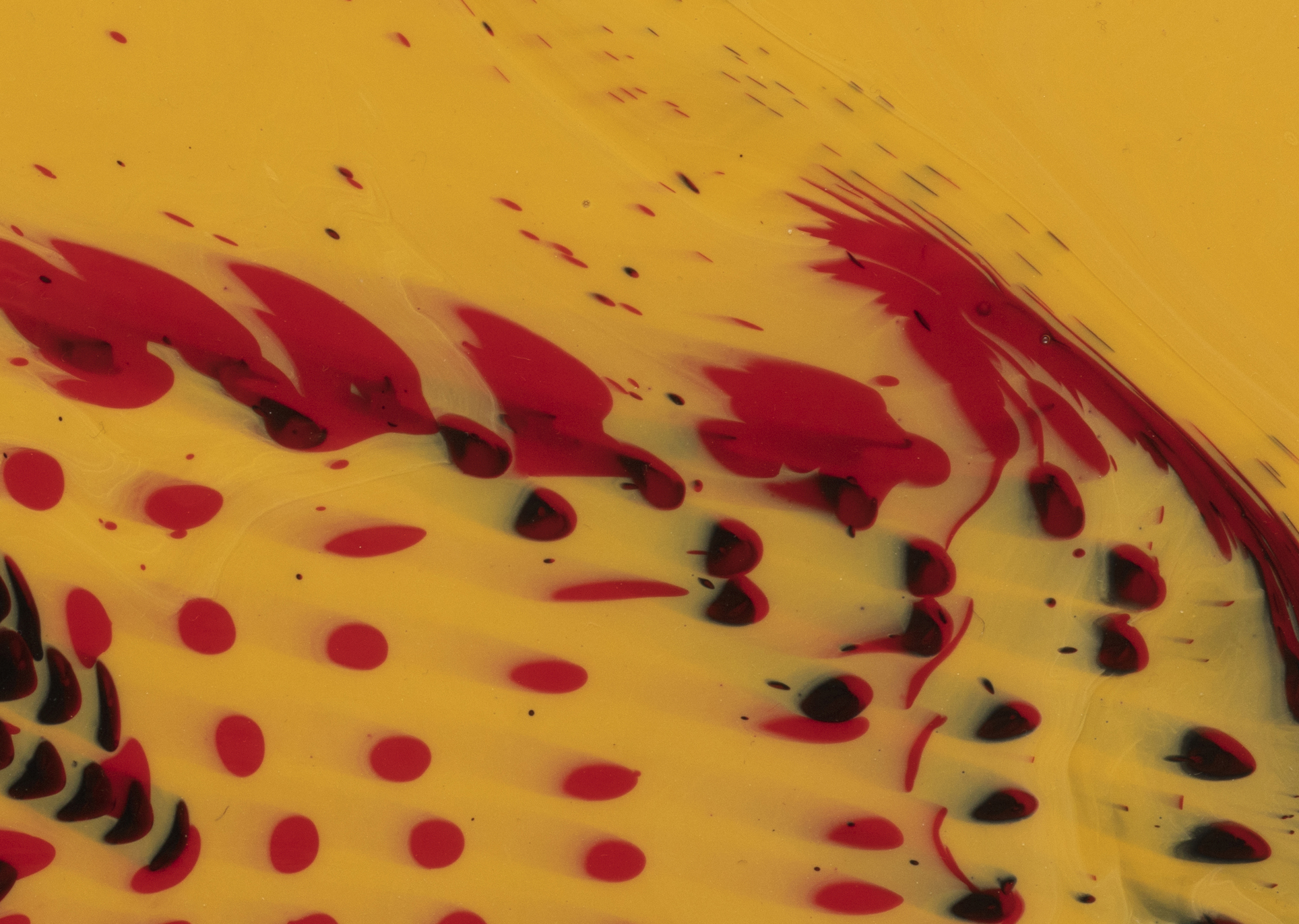
Acrylic on canvas
14 x 18 inches (35.6 x 45.7 cm)
Photo: Steven Probert
© Tauba Auerbach. Courtesy Paula Cooper Gallery, New York
Acrylic on canvas
14 x 18 inches (35.6 x 45.7 cm)
Photo: Steven Probert
© Tauba Auerbach. Courtesy Paula Cooper Gallery, New York
Eloise Calandre, Judith & the Bird, 2020
Coded narrative
See the work at http://www.eloisecalandre.net/
Jamie Shovlin, Scroll, 2011-16
Digital animation transferred to 4K video
Continuous loop
Hito Steyerl, How Not to be Seen: A Fucking Didactic Educational .MOV File, 2013
Single channel video with sound
15 minutes 52 seconds
Head to http://ourmetaverse.live/metaversetv to watch the film, Feel My Metaverse, staring Sakeema Crook as ‘Pando’ and Linda Rocco as ‘O’ and sound by Khidja.
Poster for Feel My Metaverse viewable on ourmetaverse.live
Financial Times stock listings, ink, acrylic gel and spray on sail cloth
229 x 489 cm (triptych)
Courtesy of Edel Assanti, London
Single channel video with sound
6 minutes 16 seconds
Commissioned by John Hansard Gallery along with How to Fly, 2020
Both works viewable at https://jhg.art/
Nabil Ahmed, Sounding Chaos, 2016
Essay
First published in Rapture 03, Office for Contemporary Art (OCA) Norway, 2016
Nabil Ahmed is the founder INTERPRT, a research and design studio that investigates environmental crimes.
http://interprt.org/
Single channel video with sound
2 minutes 19 seconds




























 Chris Ware, Untitled, 2012
Chris Ware, Untitled, 2012
From Building Stories
Pencil and ink on board with digital colour
HD film
23 minutes 24 seconds
Walking man: Francesco Pedraglio
Cinematographer: Fabio Petronilli
Second camera: Sonia Veronelli
Sound mixing: Filippo Restelli
Colour grading: estudio de producción, Mexico
Location: Como, Italy
Mixed media, in sixteen parts
242 x 202 cm
Courtesy of White Cube, London
Playlist
Playlist
Iain Forsyth & Jane Pollard, First Kiss, 2010
Single channel video with sound
3 minutes 50 seconds
Courtesy of the artists & Kate MacGarry, London
Music Publisher: Touch Music [MCPS]

Yuri Pattison, sunset provision, 2020 ~ ongoing
WebGL Game Engine, uRadmonitor A3, live data
Digital Fabrication and Development: Tom Merrell & Rob Prouse
4 minutes 00 seconds
Taken from the score for “Monos” directed by Alejandro Landes.
Released by Invada Records / Lakeshore Records
Series of photographs of pages from home bookshelves
– Francecsa Gavin.

Digital photograph of vintage book page



 Francesca Gavin, Digital photograph of vintage book page
Francesca Gavin, Digital photograph of vintage book page


Single channel video with sound
4 minutes 37 seconds
Film by Hiraki Sawa
Music by Yuko Ikoma Martin Holman, Lost in the Stars, Lockdown, time & space, June 2020
Martin Holman, Lost in the Stars, Lockdown, time & space, June 2020
Essay with images
www.martinholman.co.uk

C-type print
122 x 152 cm
C-type print
122 x 152 cm
C-type print
122 x 152 cm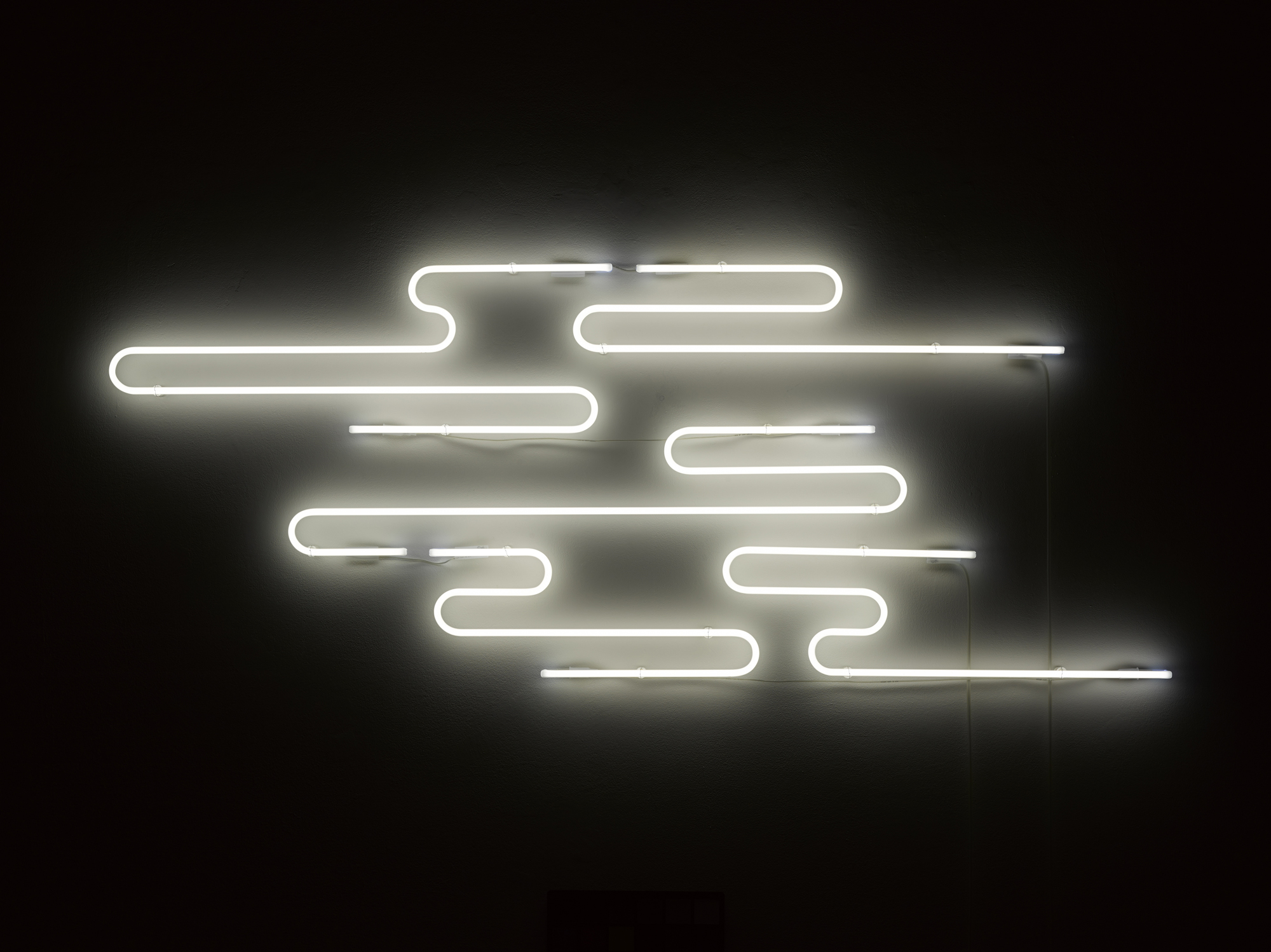
Neon
67 x 170 x 4.5 cm
© Cerith Wyn Evans. Photo © White Cube (Ben Westoby)
Courtesy White Cube and Marian Goodman Gallery
Neon
Dimensions variable
© Cerith Wyn Evans. Photo © White Cube (Ben Westoby)
Courtesy White Cube and Marian Goodman Gallery

Pencil on paper
104 x 58.5 x 4 cm
Courtesy the artist and Frith Street Gallery, London
35mm C-print
Courtesy the artist
35mm C-print
Courtesy the artist
35mm C-print
Courtesy the artist
35mm C-print
Courtesy the artist
Single channel video with sound
6 minutes 25 seconds
This version of Jasmine by Jai Paul is created using the BRONZE AI engine. On each listen, Bronze performs a unique and infinite playback of the piece. Click through to jaipaul.bronze.ai
Not signed or dated
Inkjet print on paper
127.5 x 105.5 x 3.0 cm
Clip from website
Still from website
Still from website
Still from website
HD video and sound
1 minute 56 seconds
Ink on Bristol board and mixed media World in the Forcefield: The Godhead Saga – Mattheworld
World in the Forcefield: The Godhead Saga – Mattheworld
Ink on Bristol board and mixed medi
Audio recording
21 minutes 10 seconds
www.musicityglobal.com
Tapestry in teak artists frame
159 x 116 cm
Courtesy of Timothy Taylor Gallery, London & New York
Single channel video
1 minute 58 seconds
World Series 1968
Mixed media, resin, fibreglass
183 x 183 x 20 cm (72 x 72 x 8 inches)
World Series 1968
Mixed media, resin, fibreglass
183 x 183 x 20 cm (72 x 72 x 8 inches)
Single channel video with sound
4 minutes
Filmed by Vincent Moon
Produced by Erased Tapes
Elevate Festival, Petites Planètes
Two channel video, looped
Courtesy of the Artist and The Approach, London.
Single channel video
27 mins 54 seconds
© Liam Gillick. Courtesy Maureen Paley, London
Essay with image
Tonje Thilesen, 70/sek, 2020
Photograph
May 1, 2020
Edition of 5


